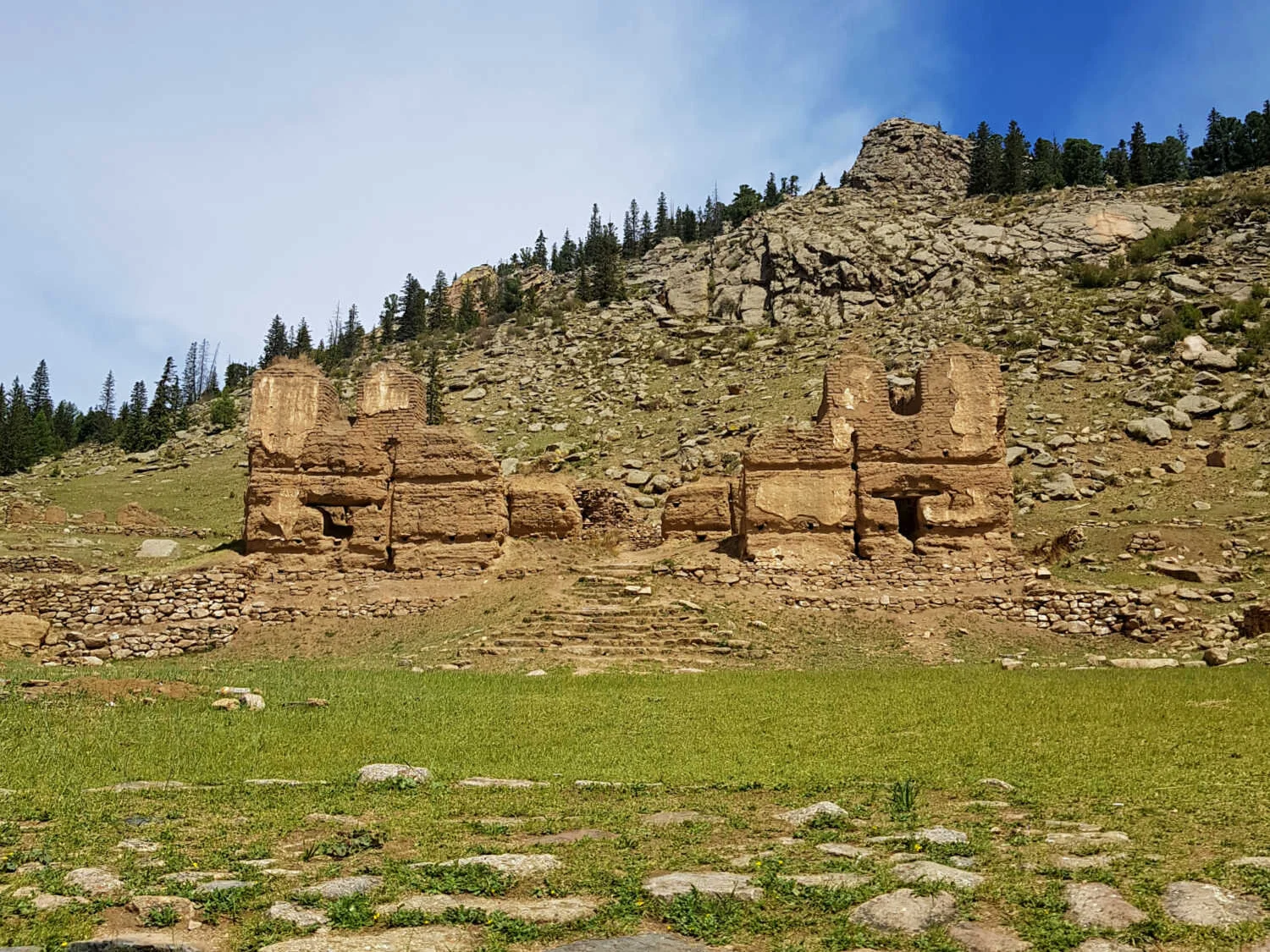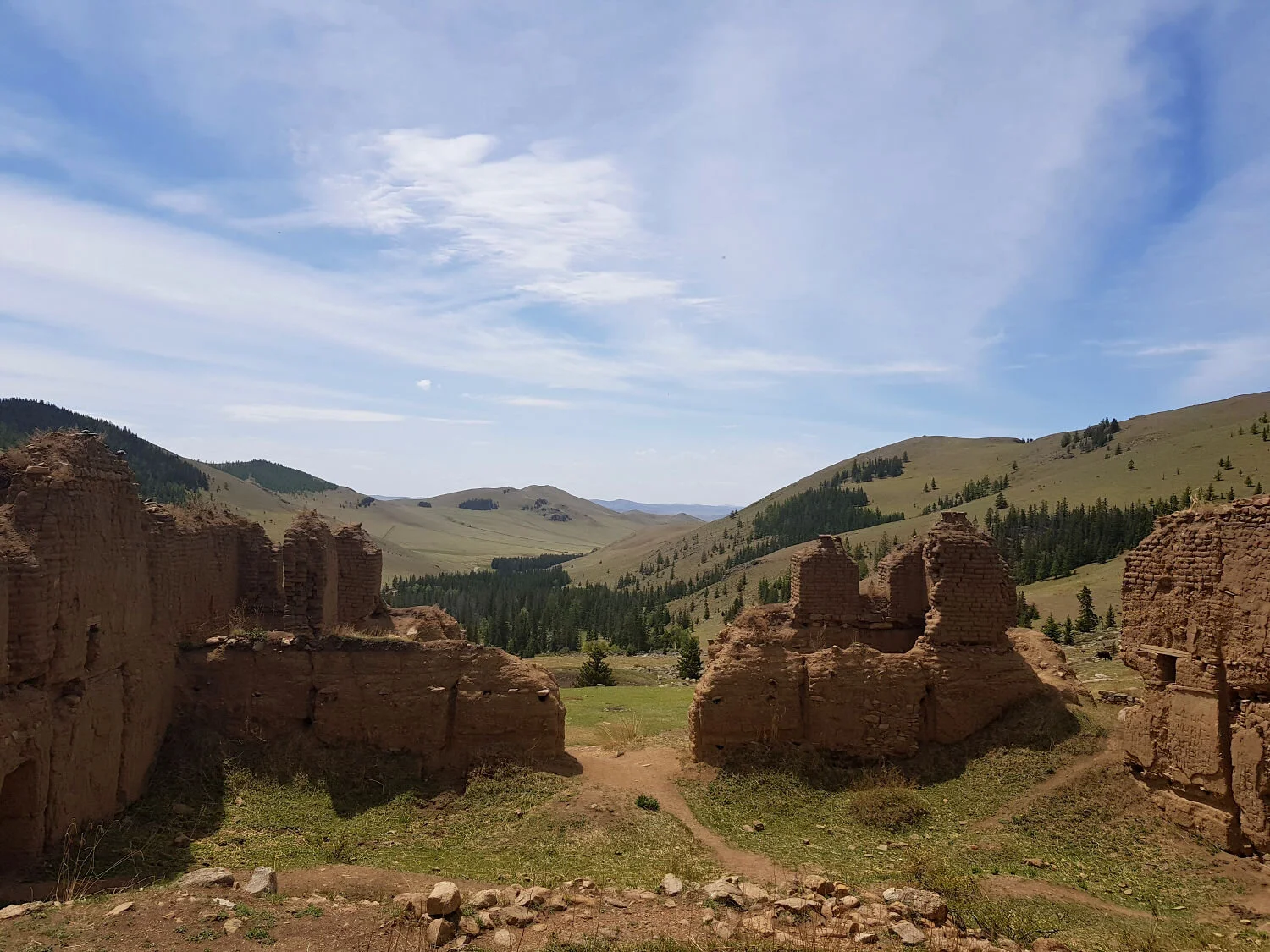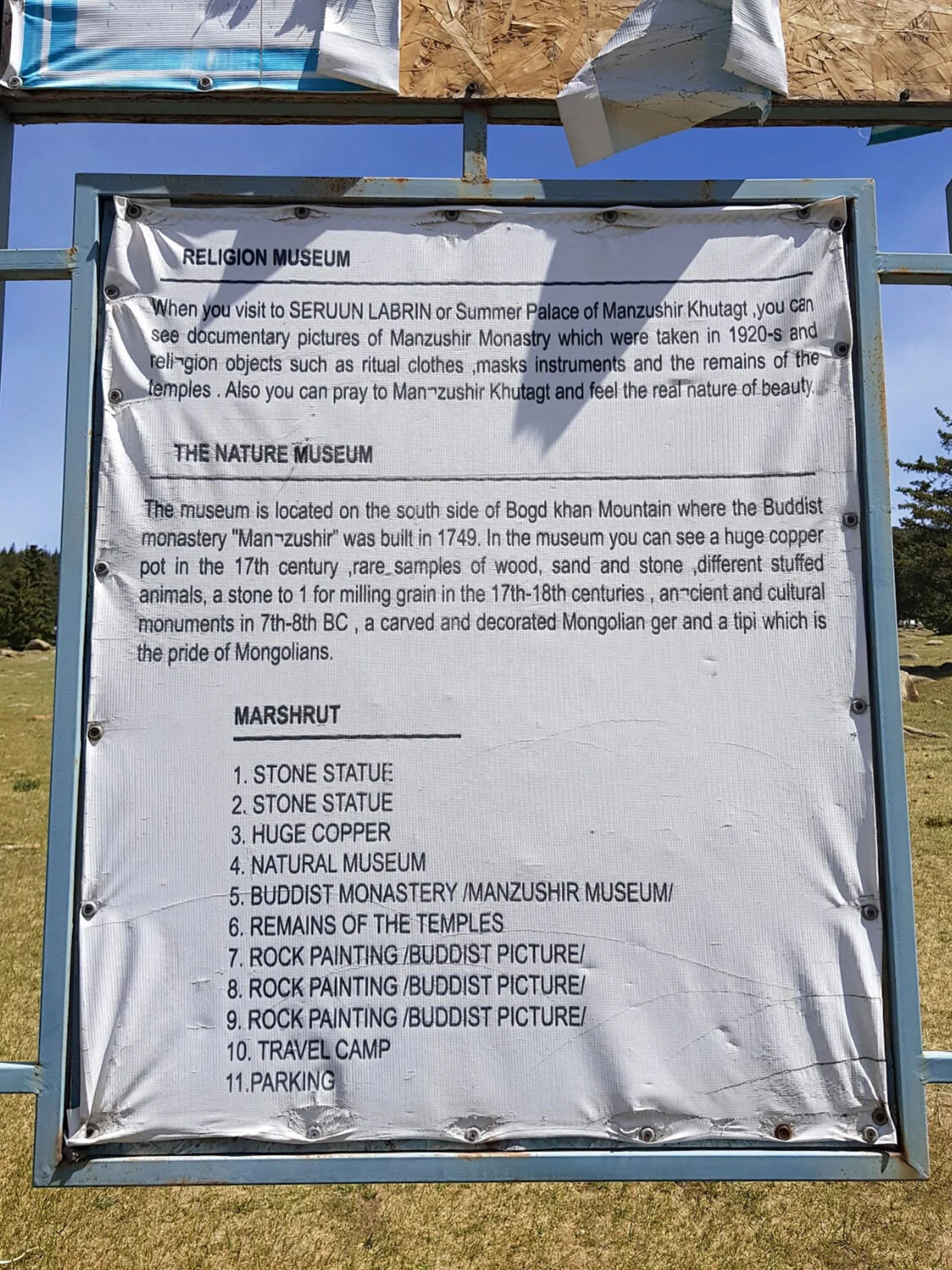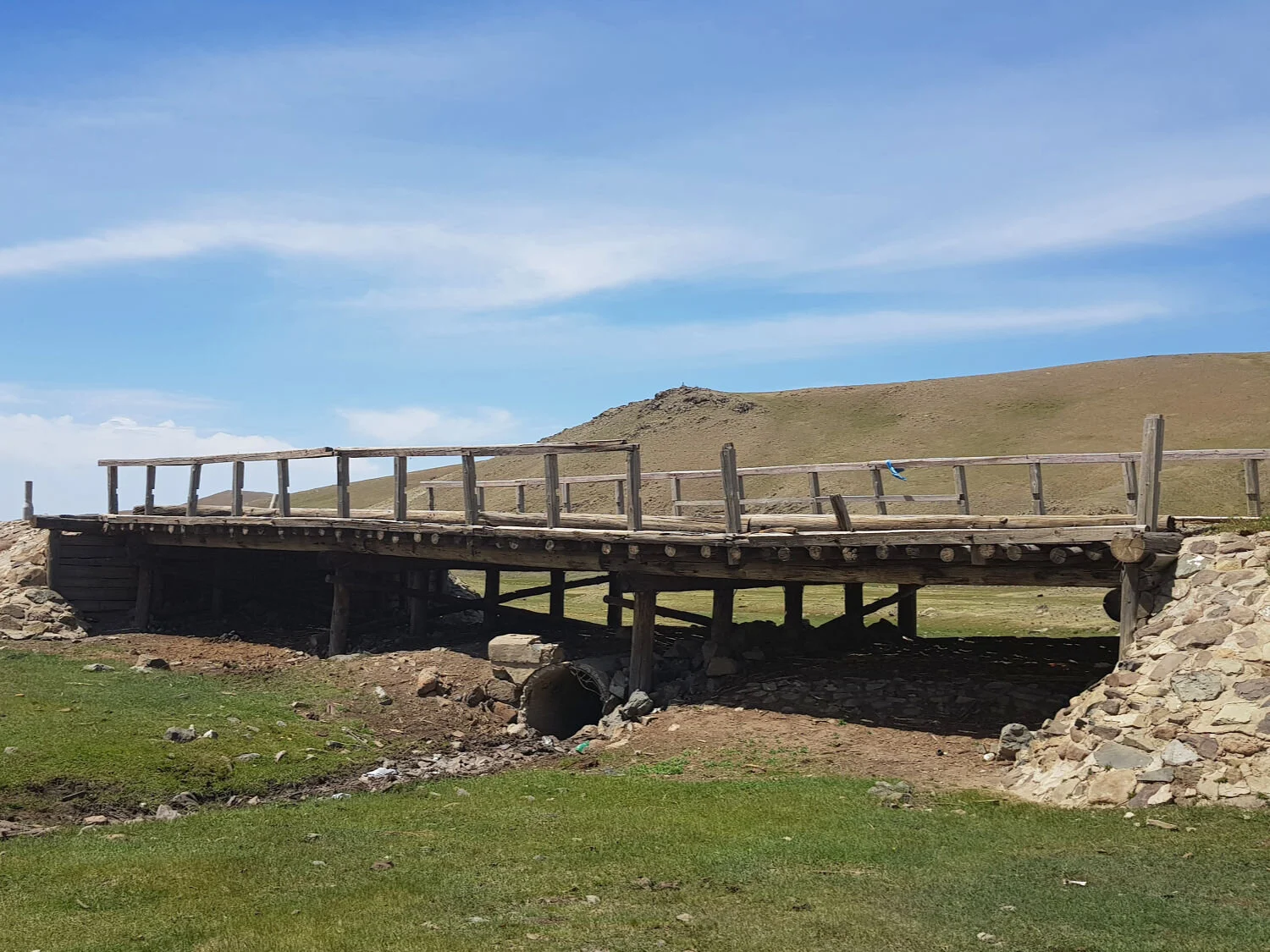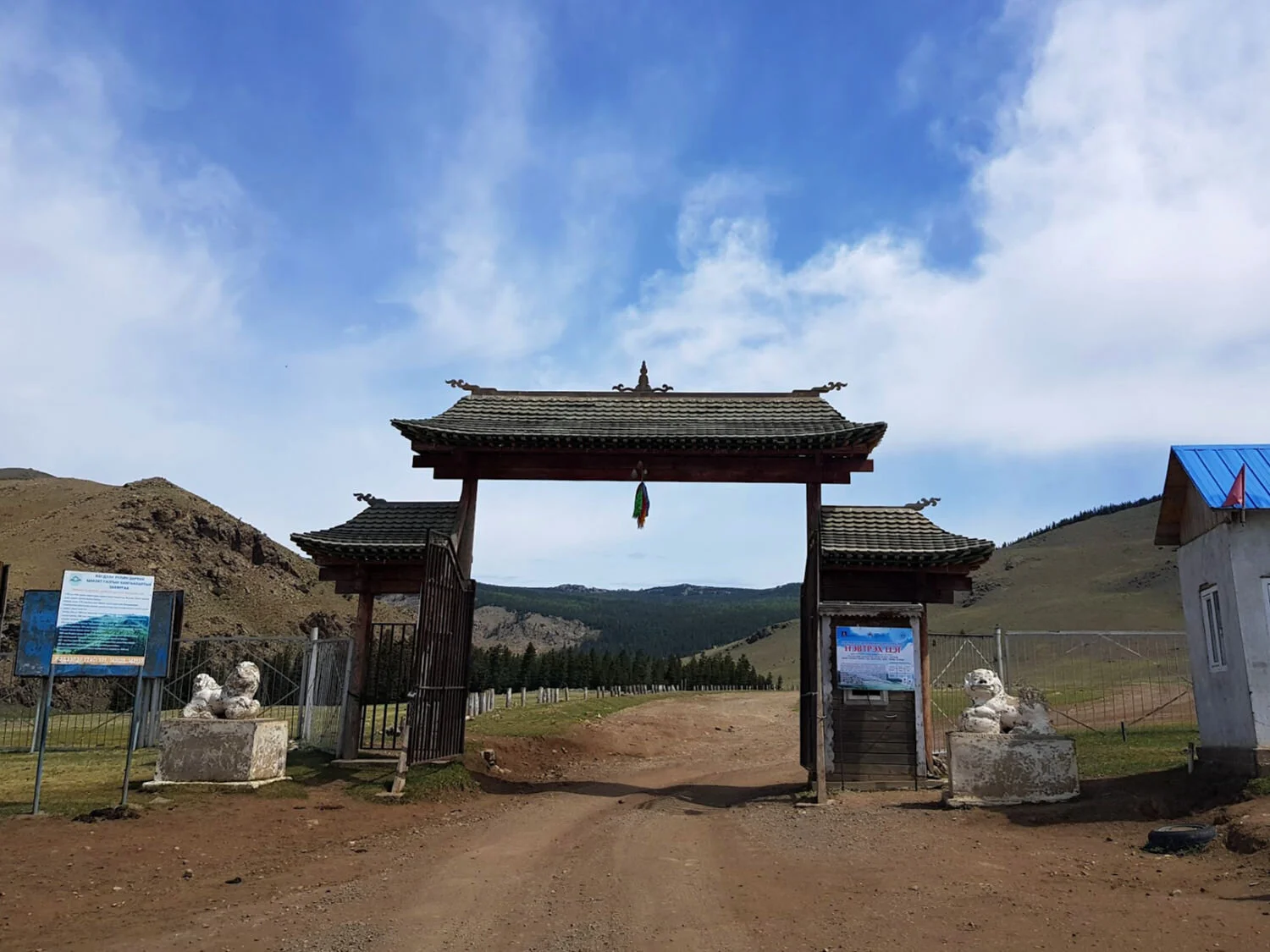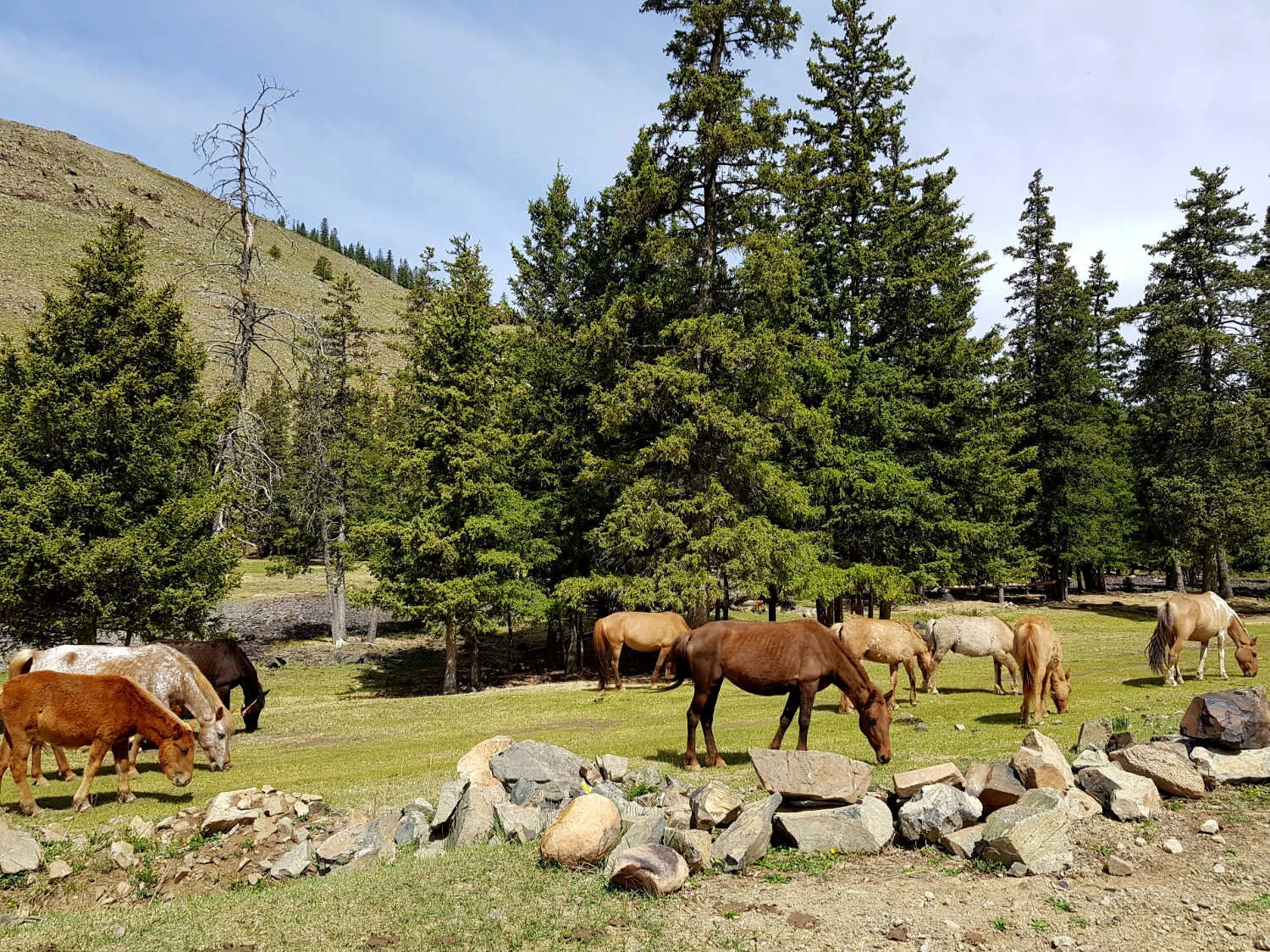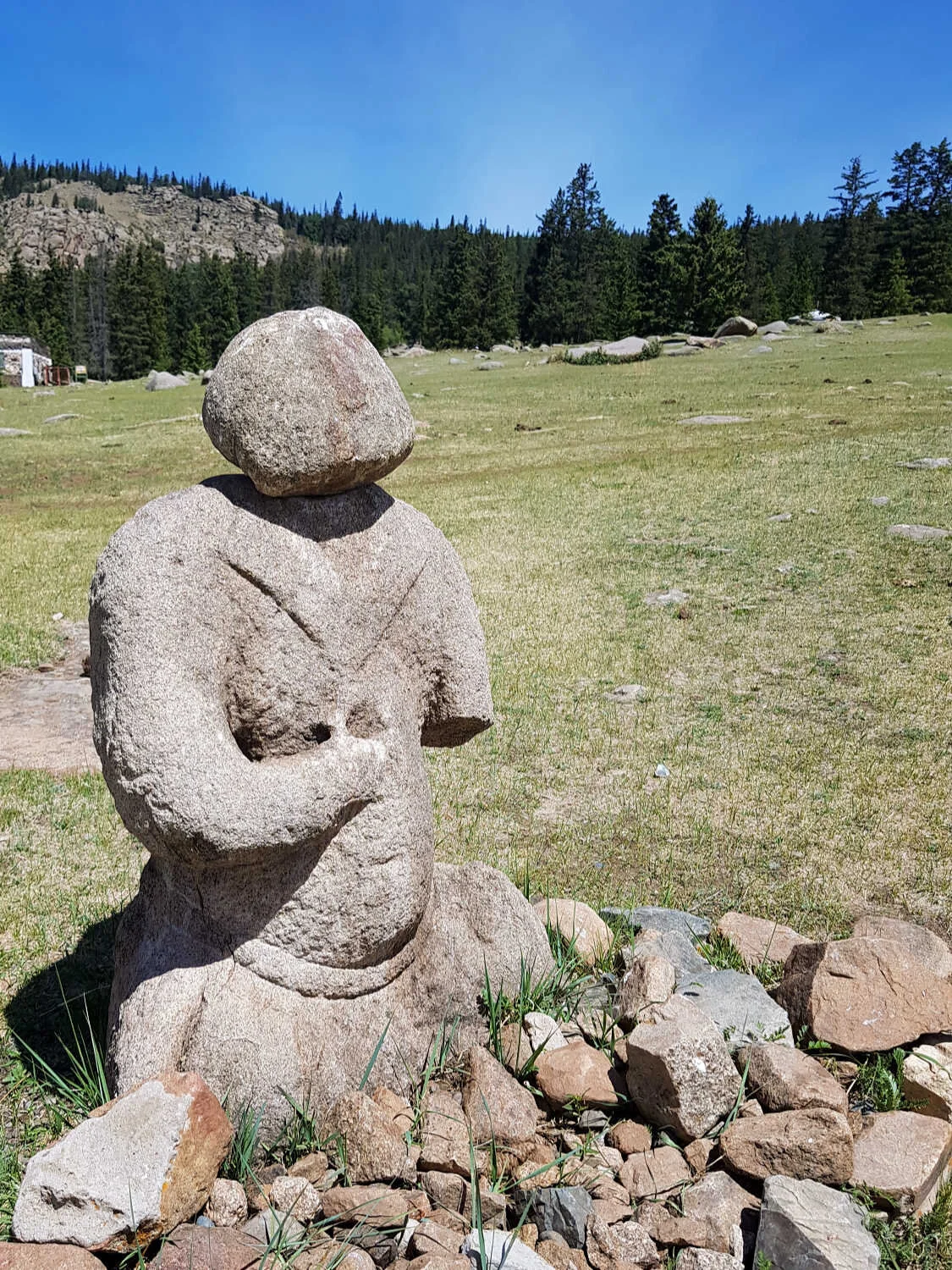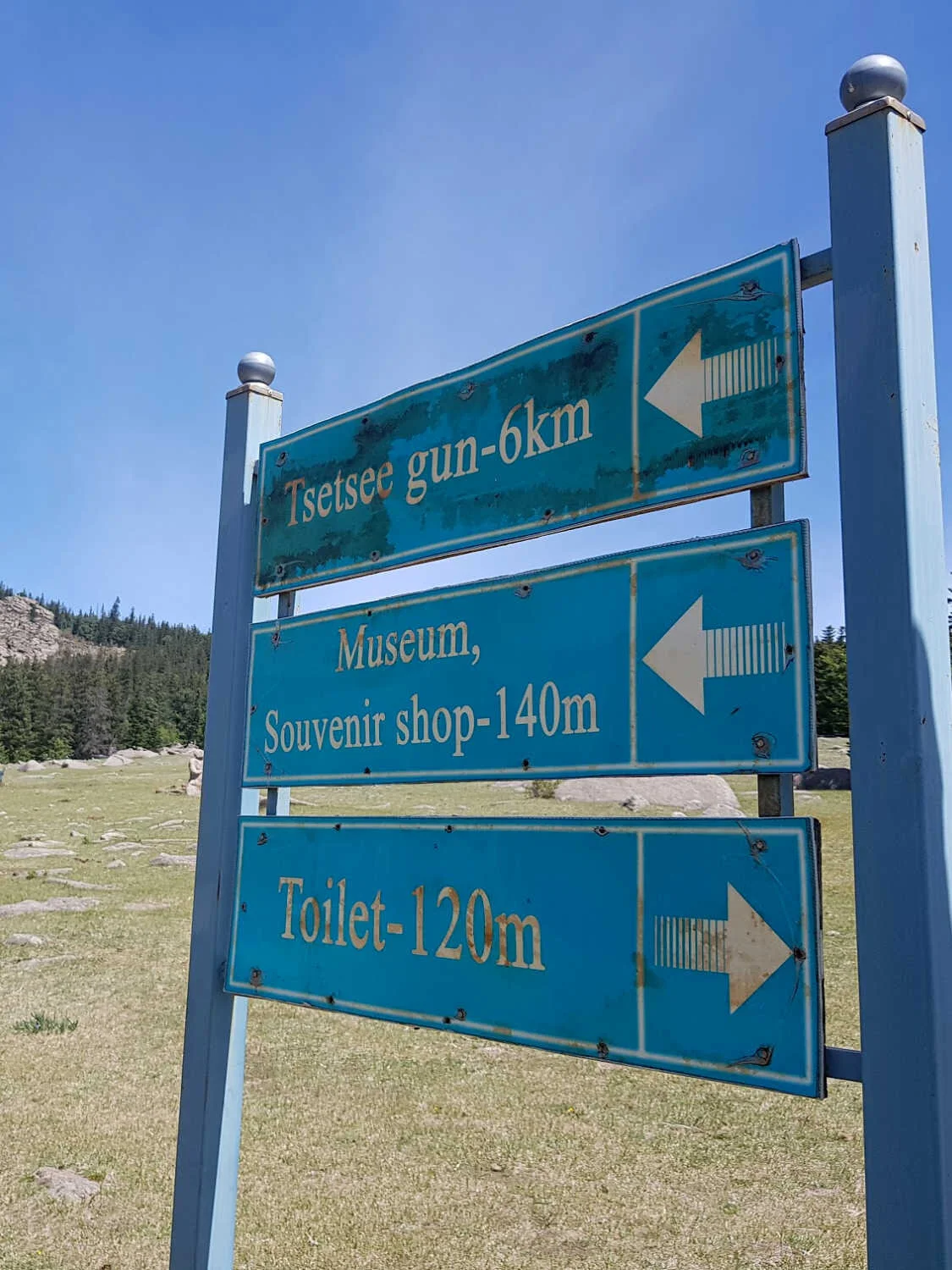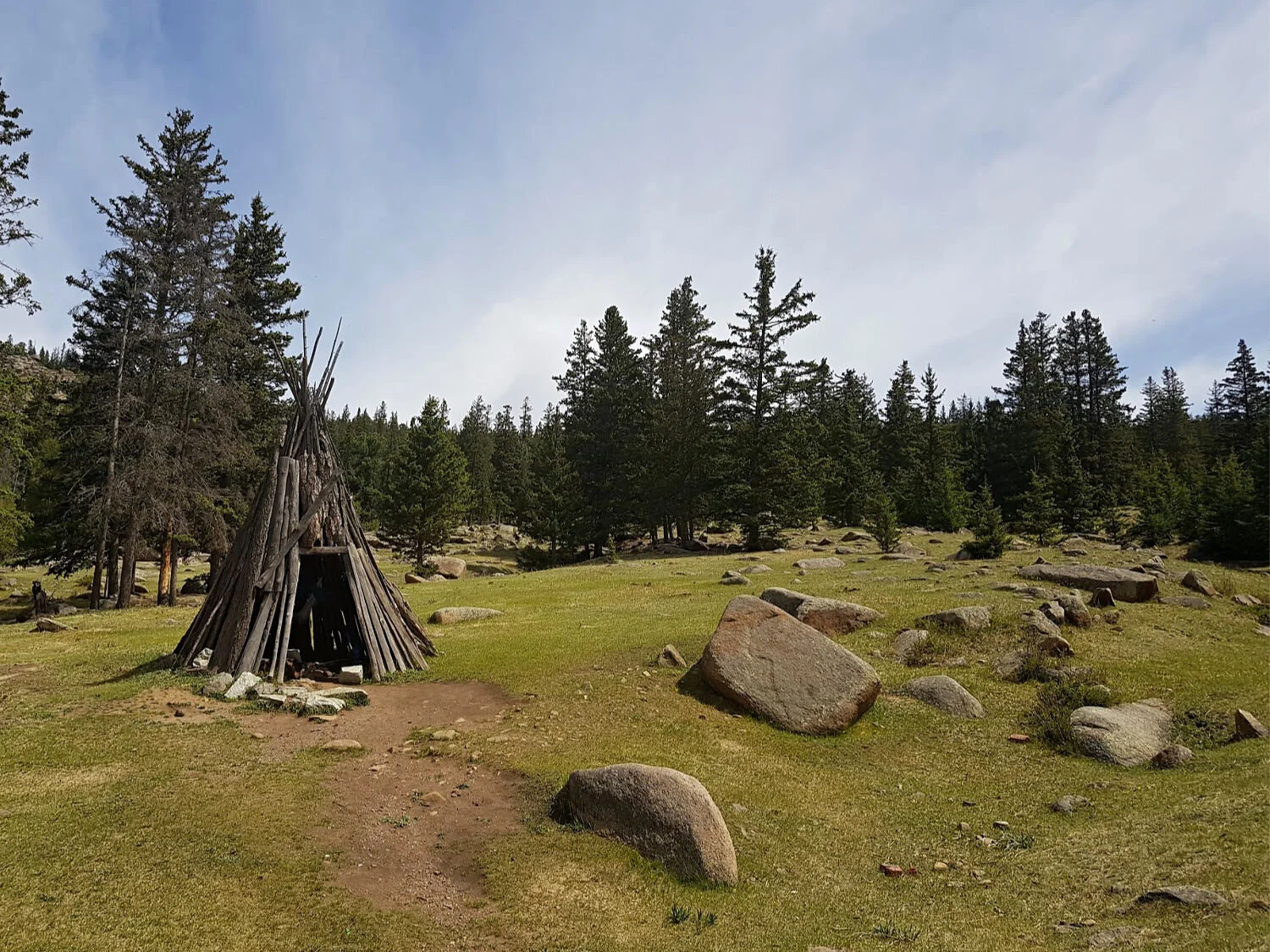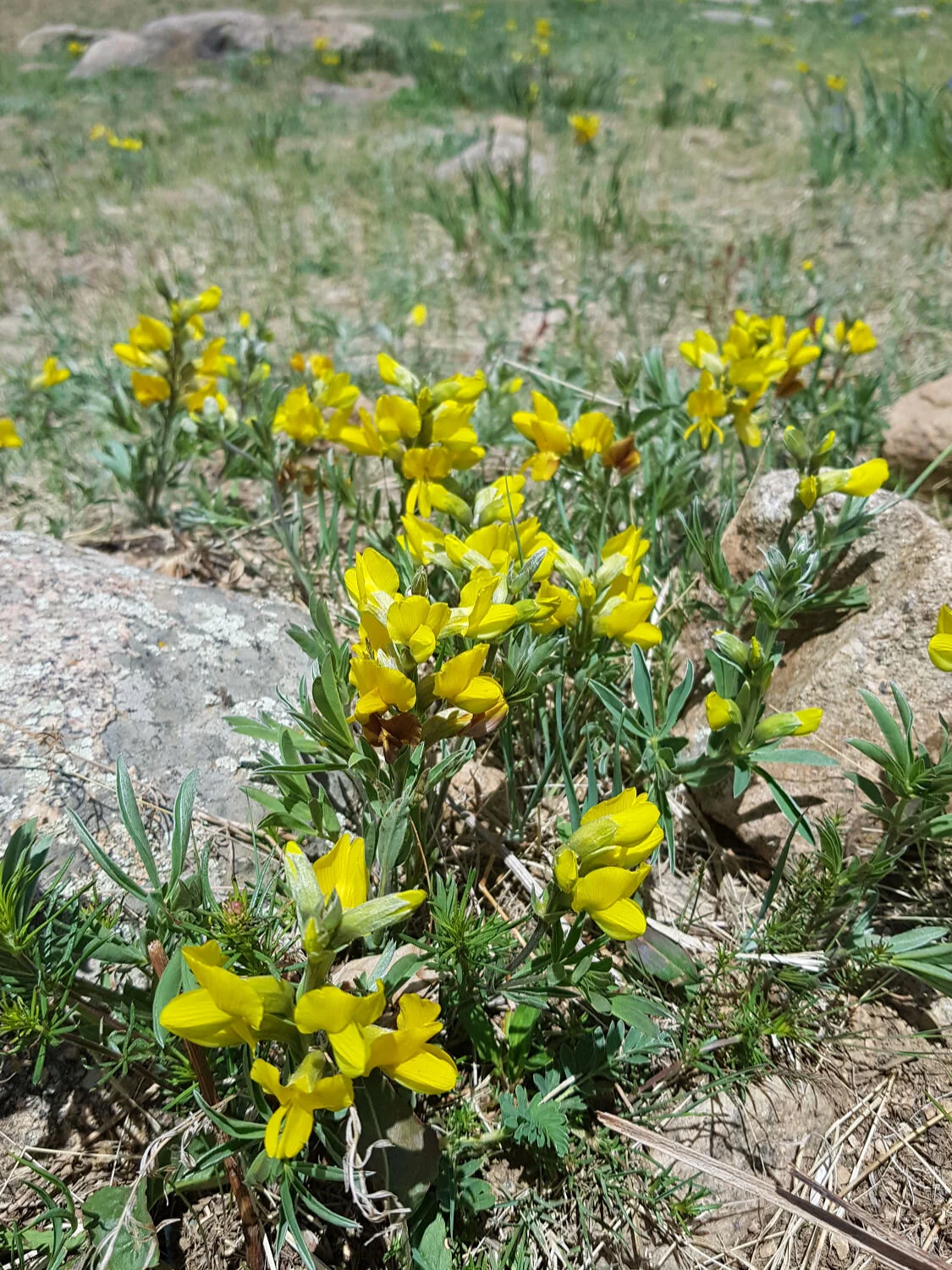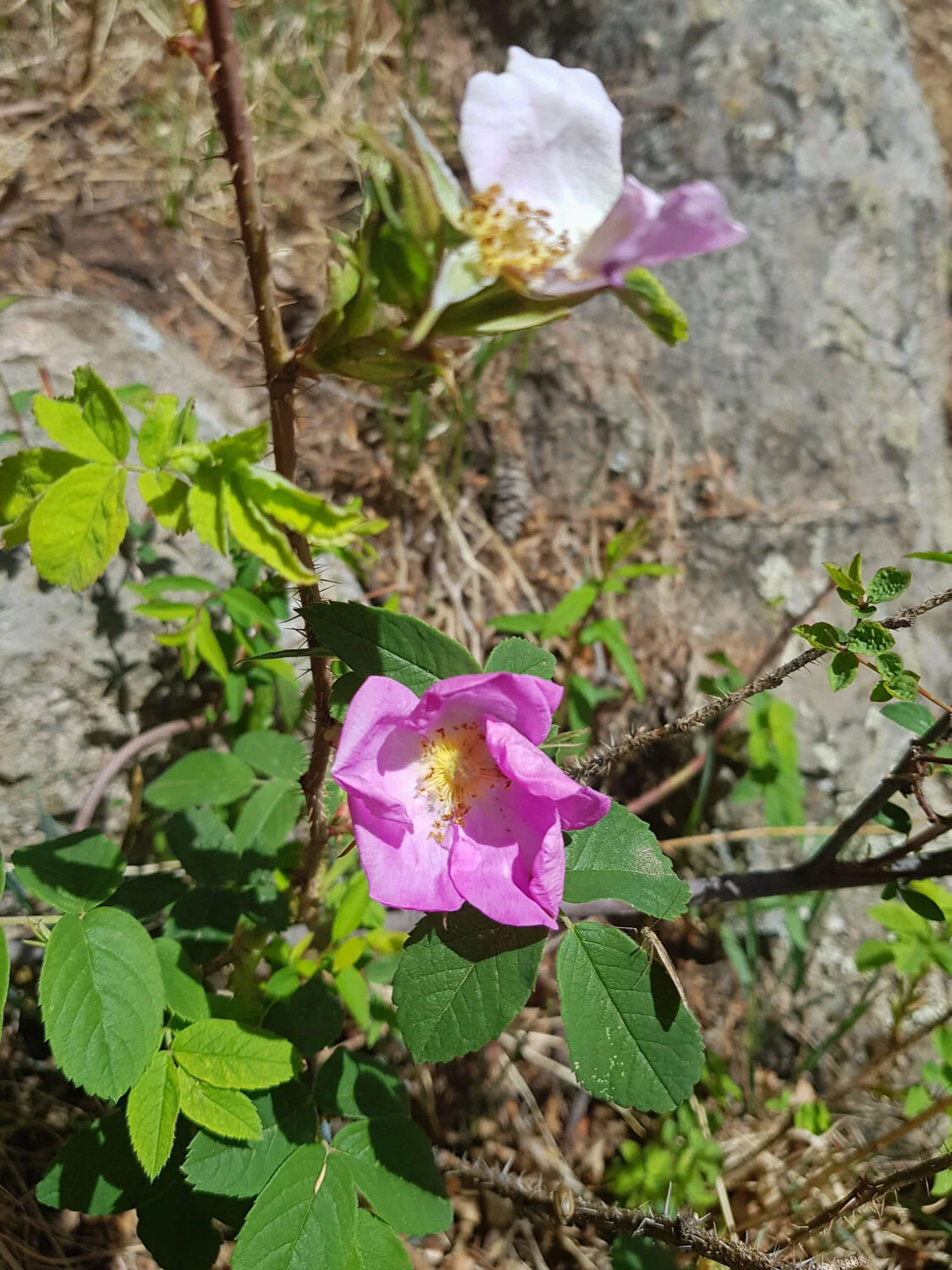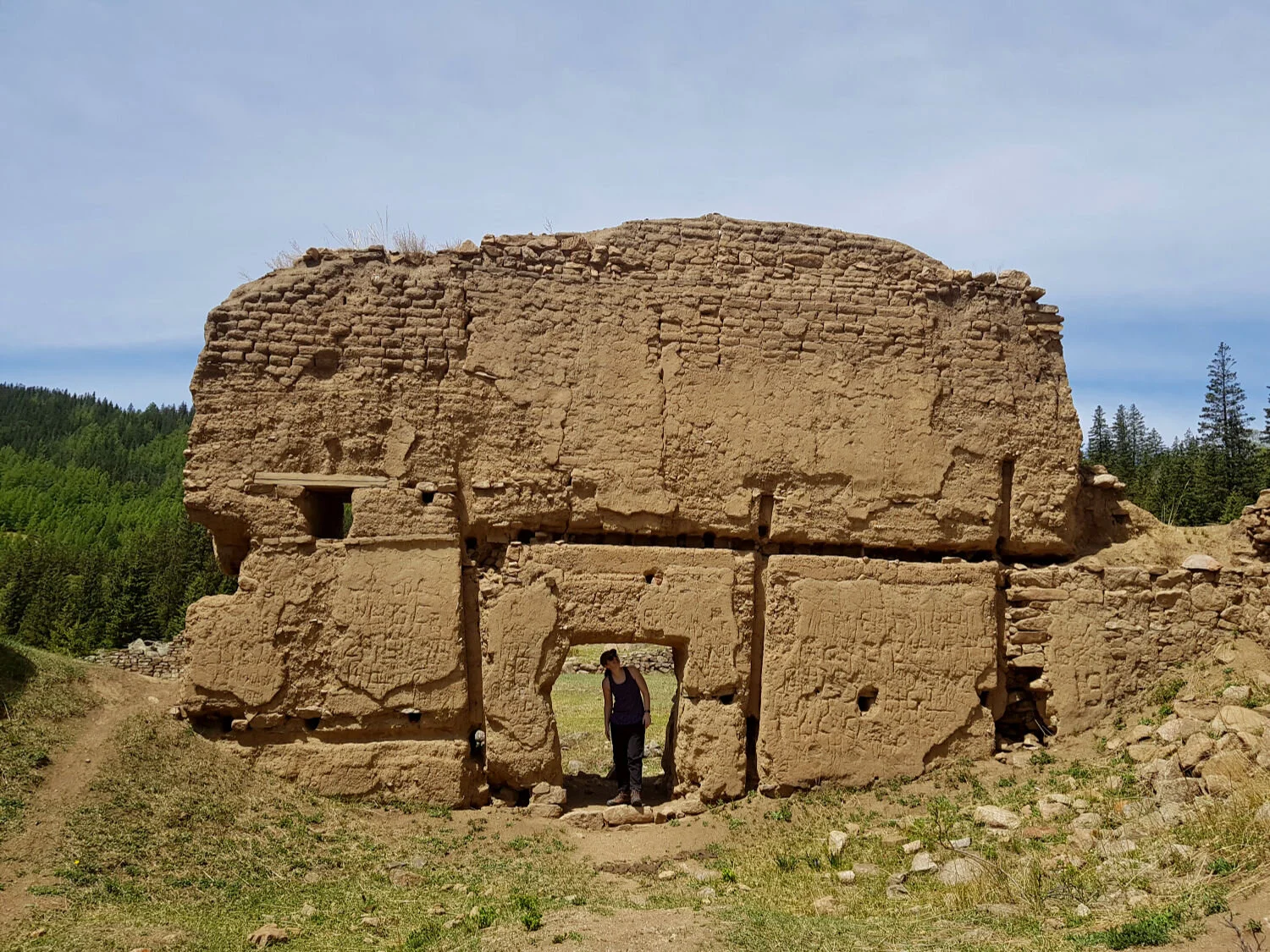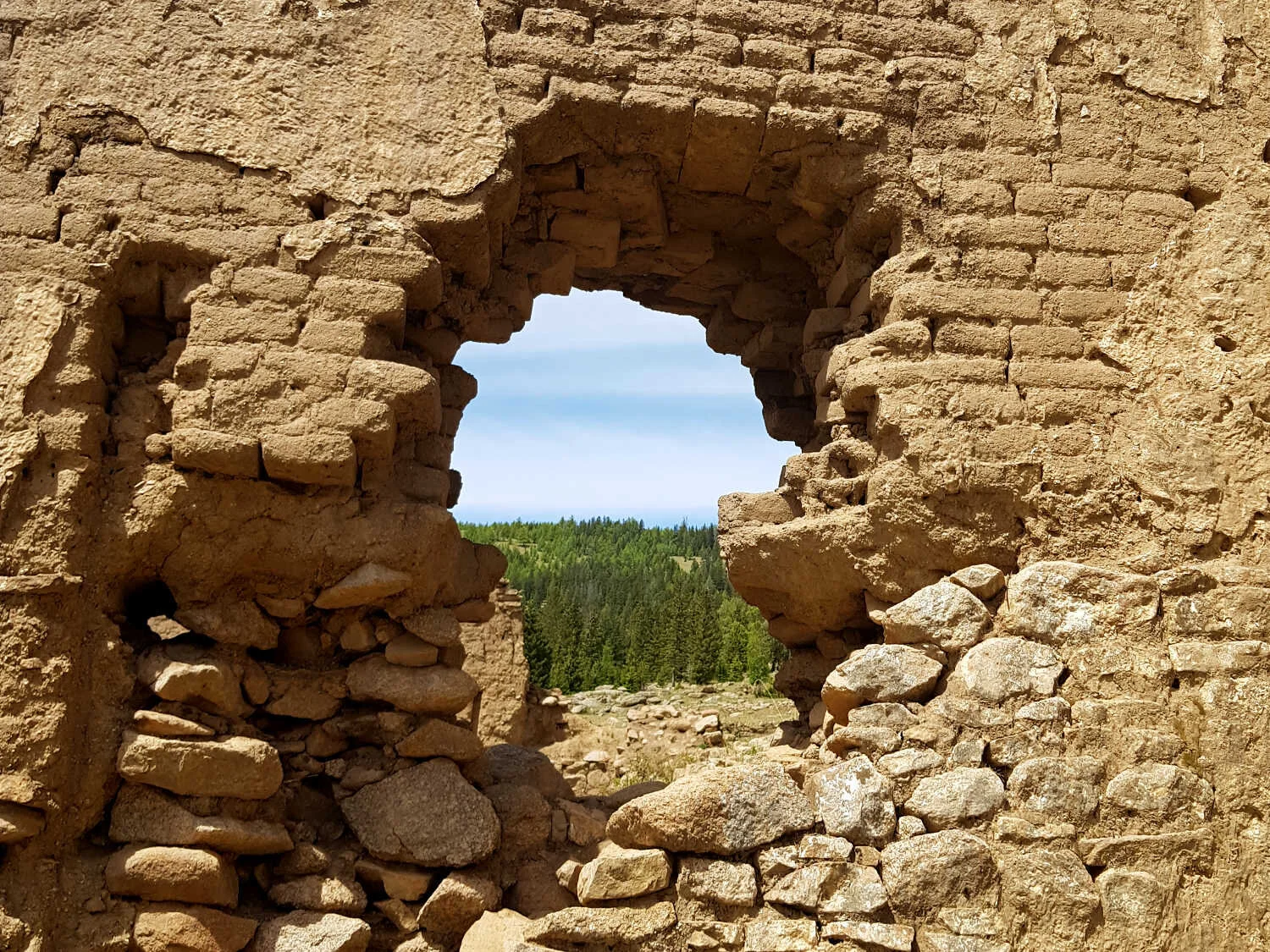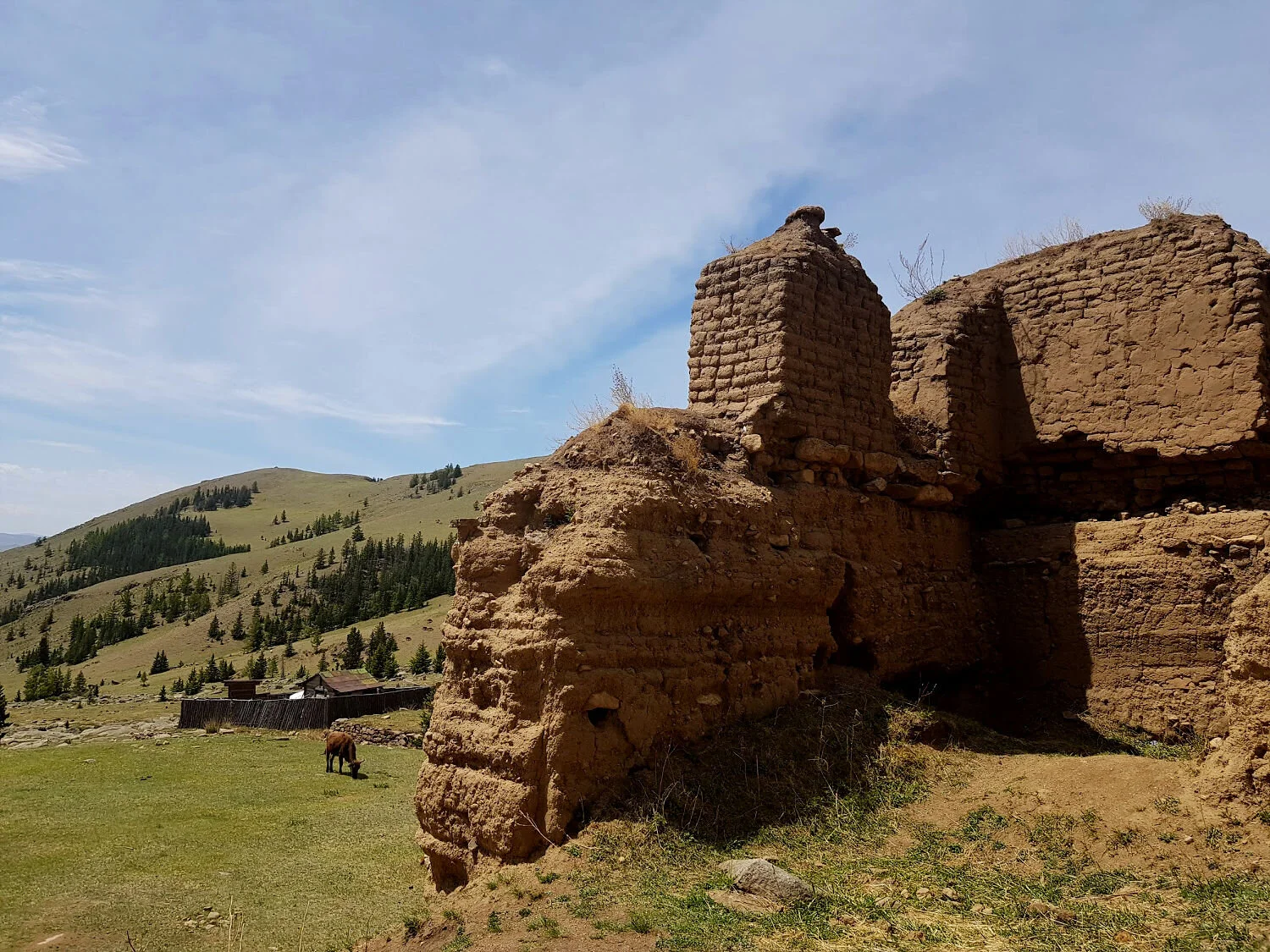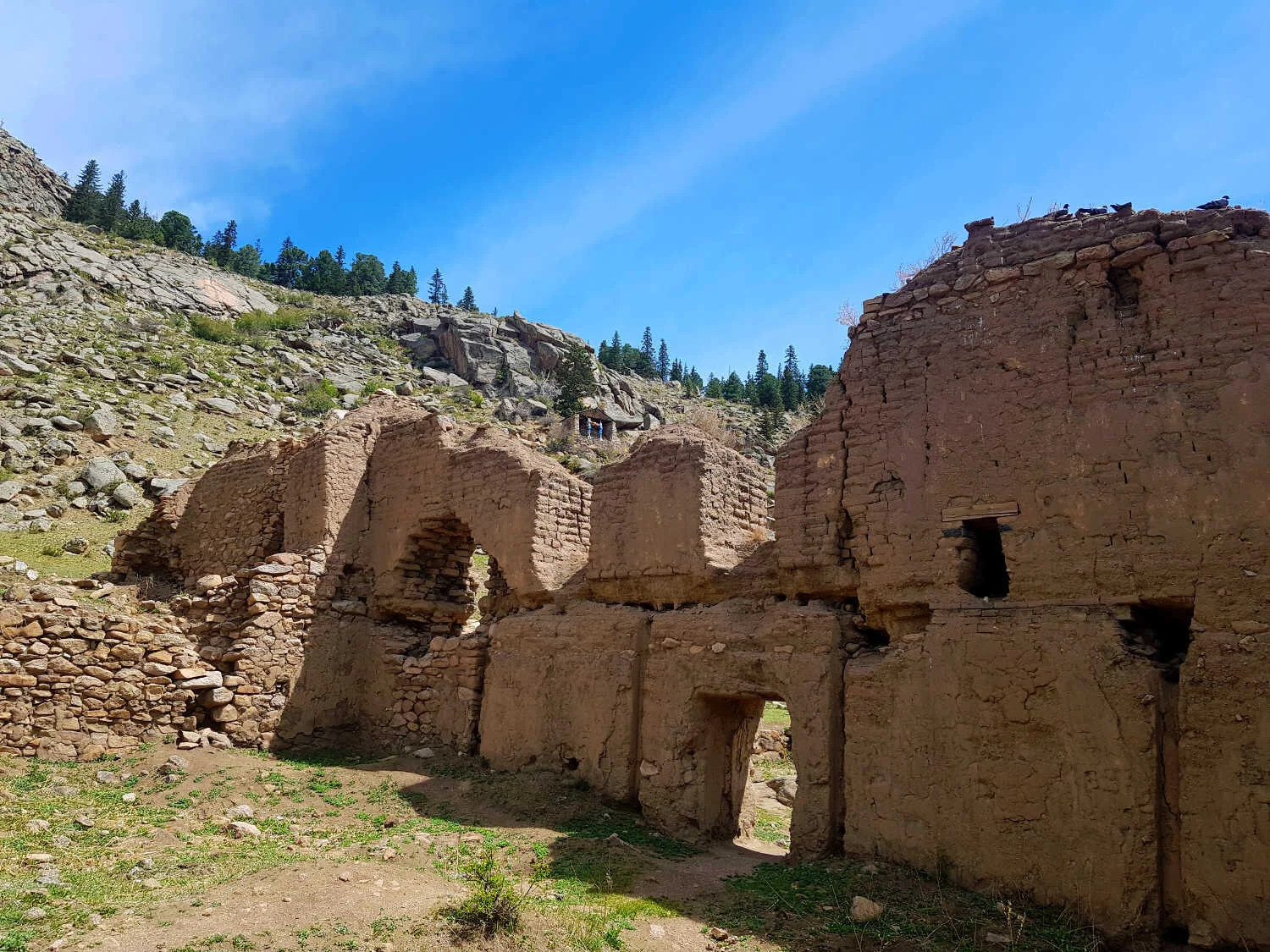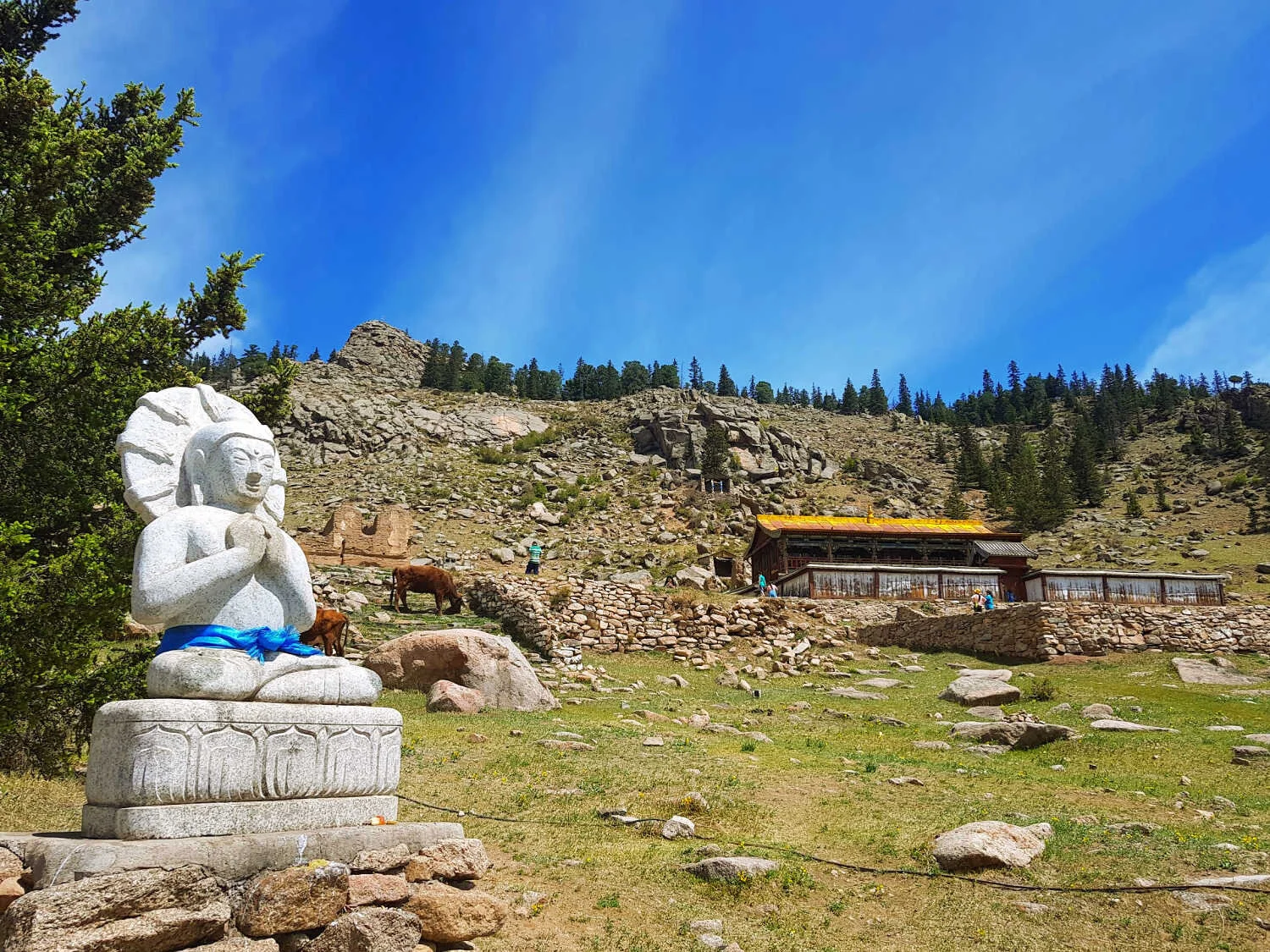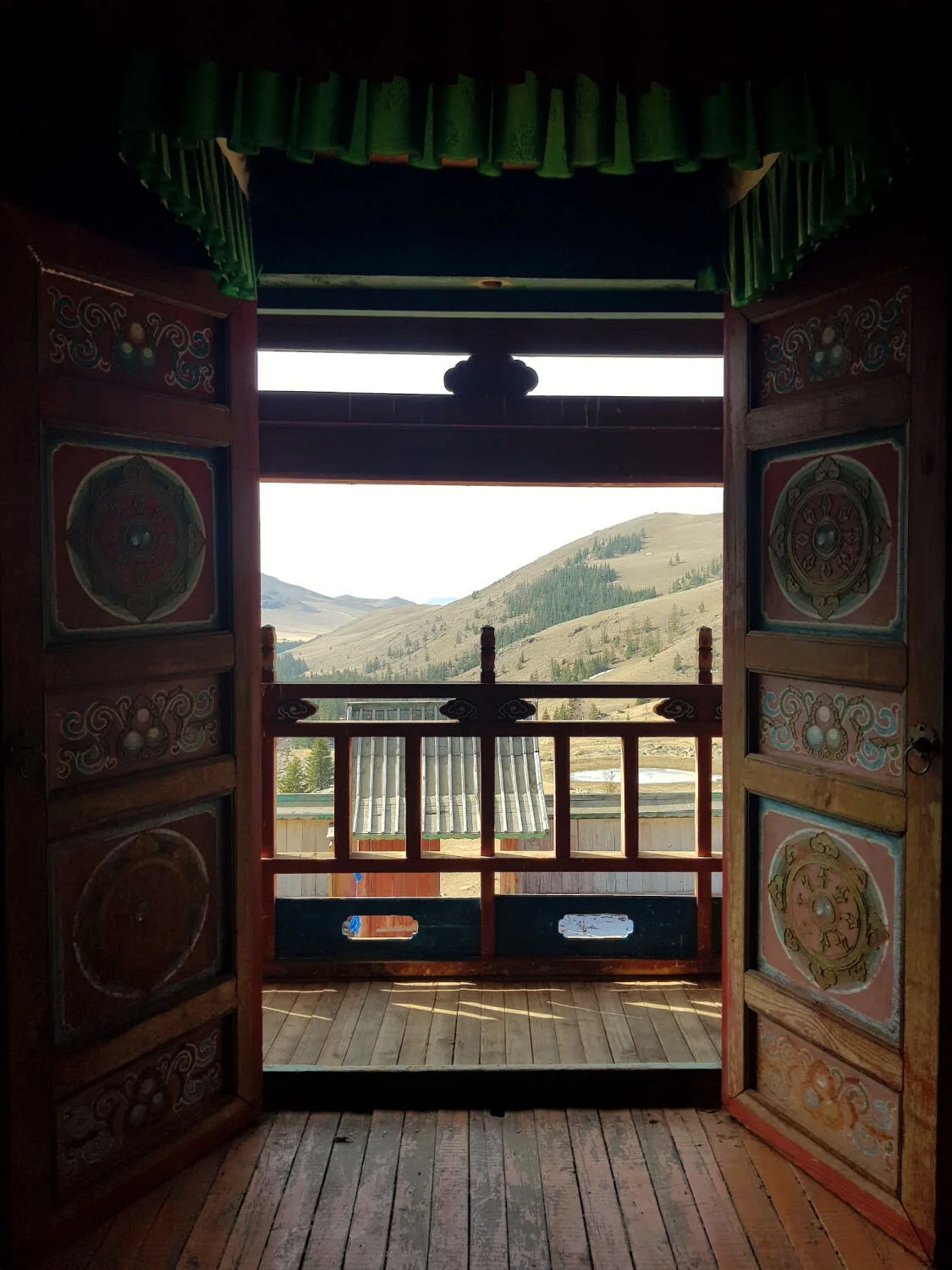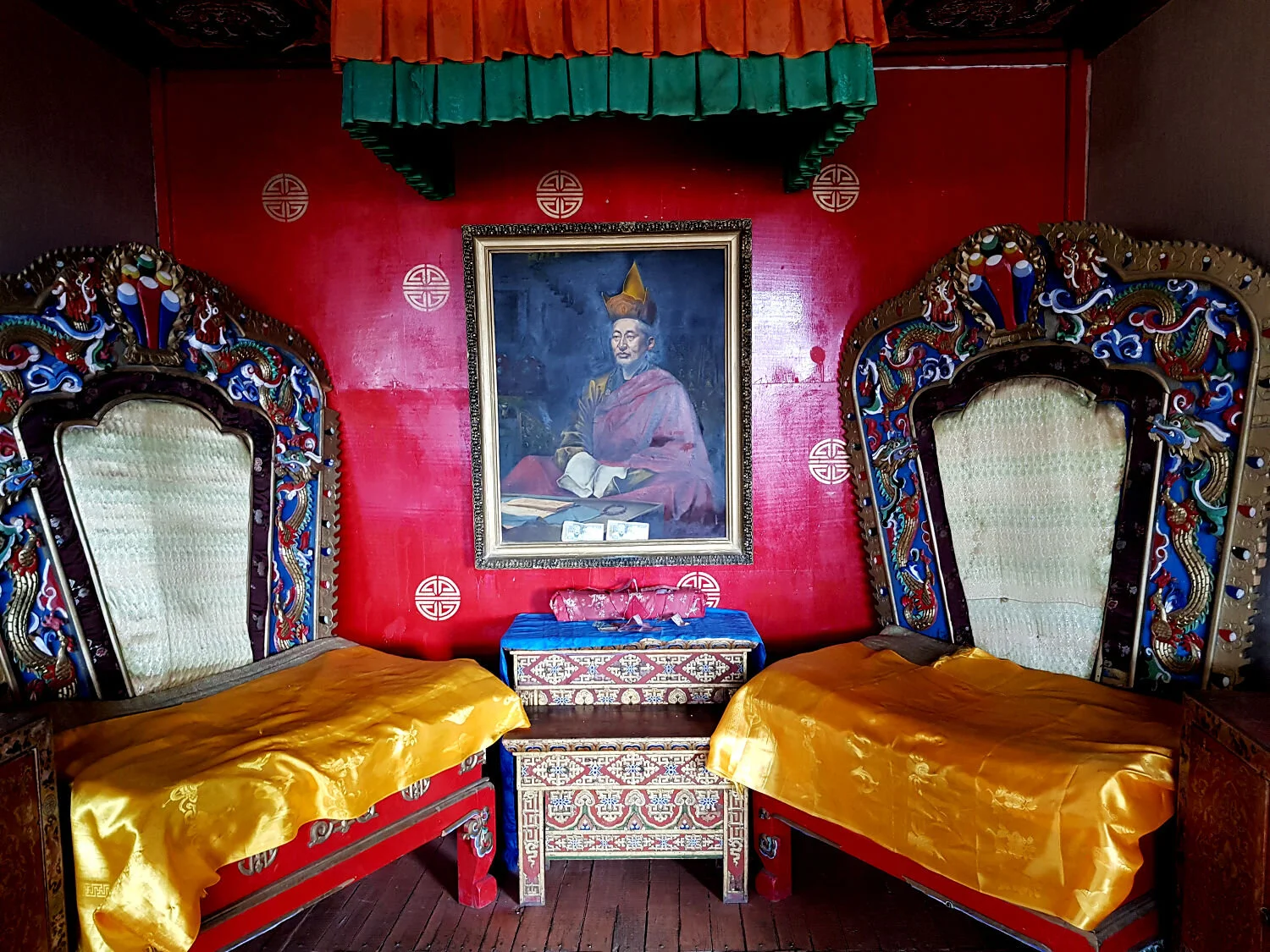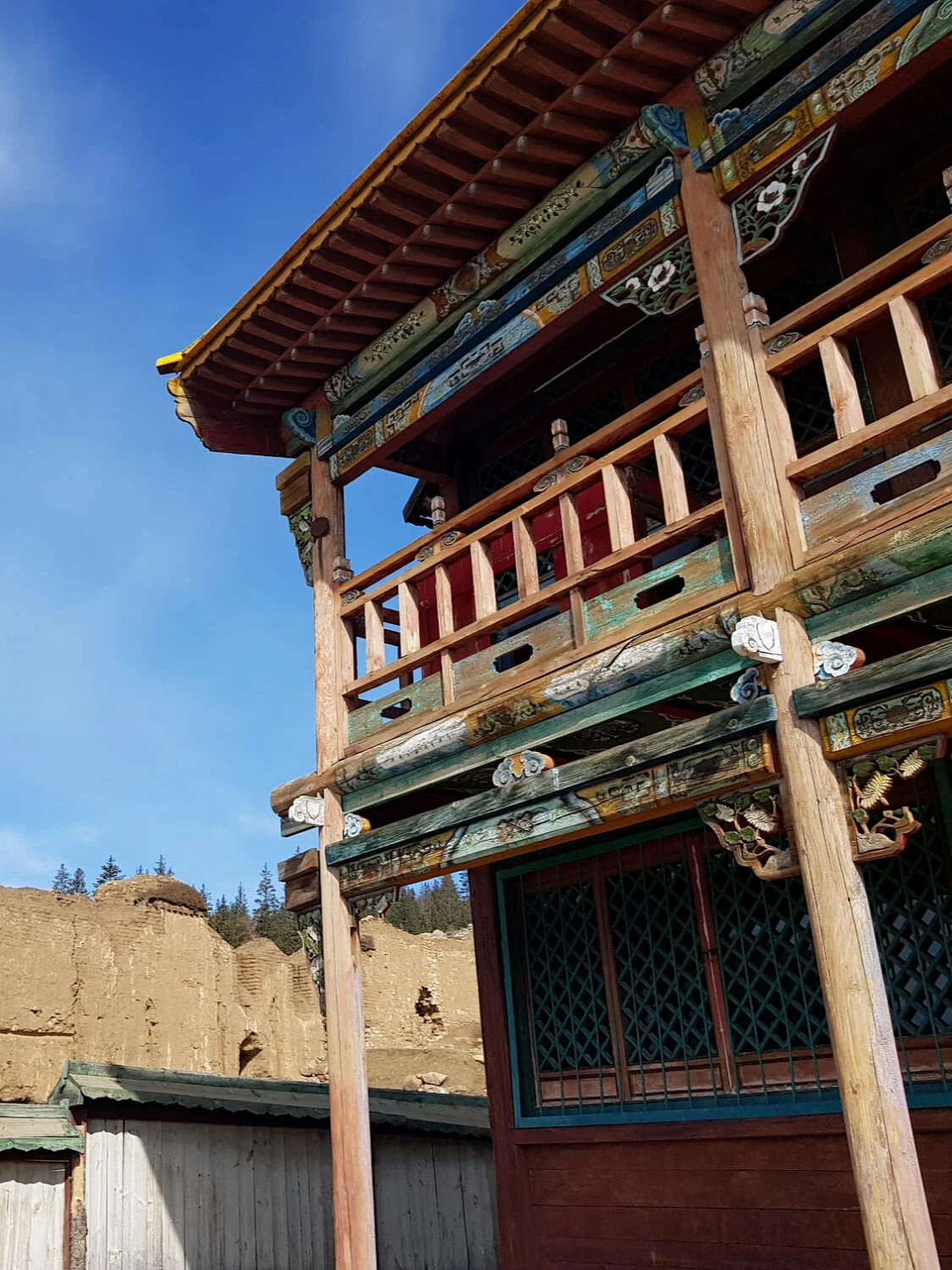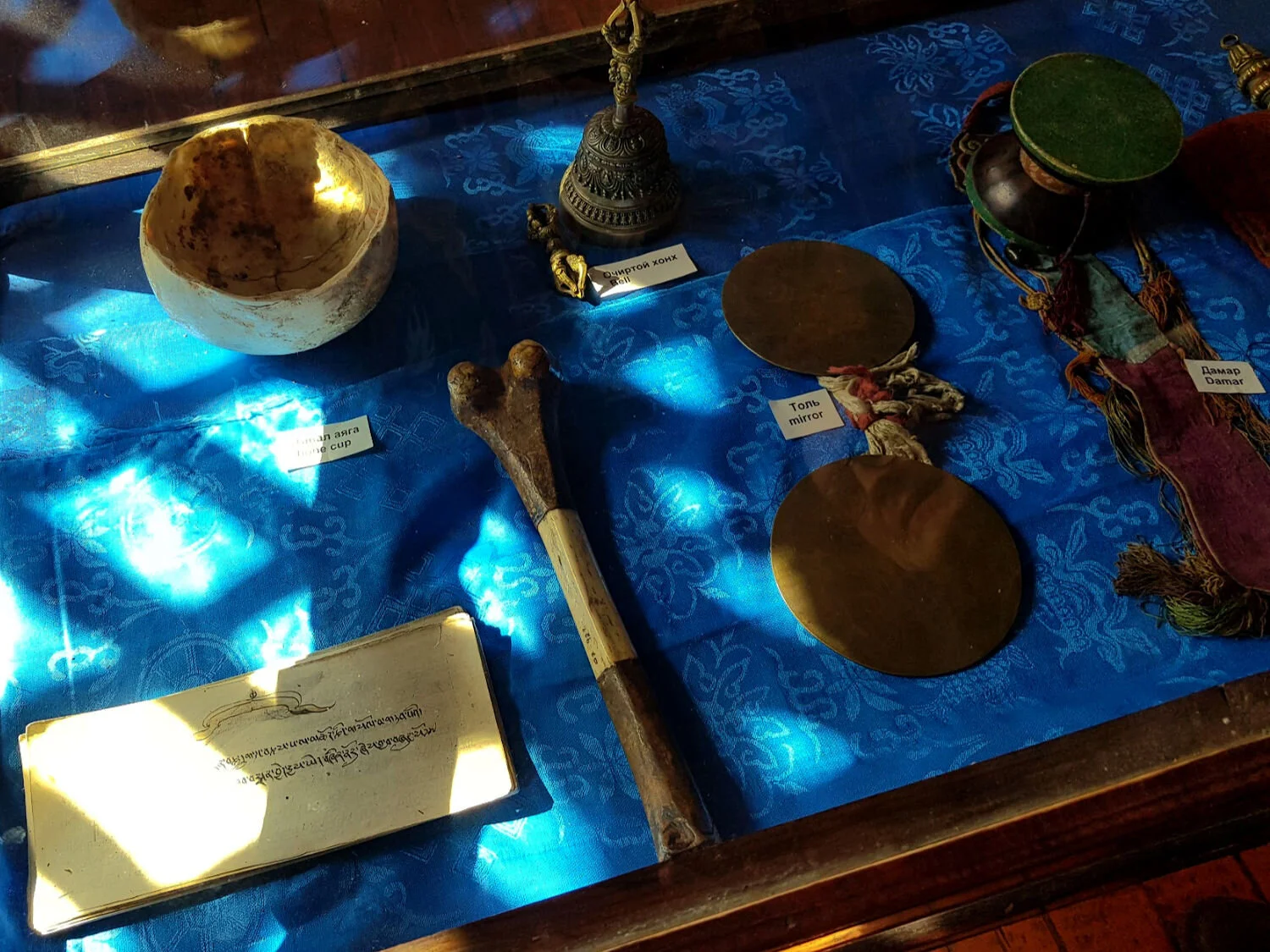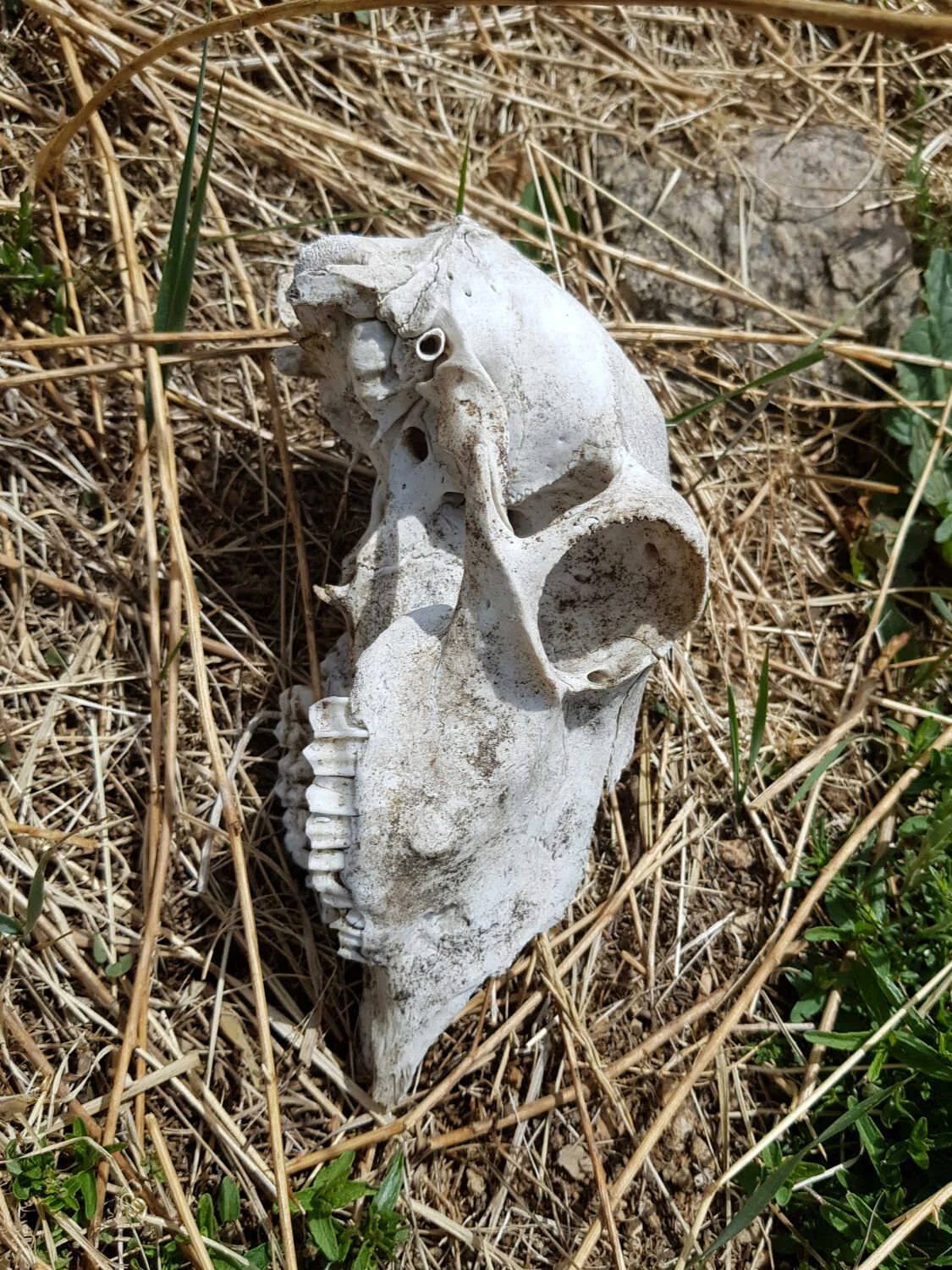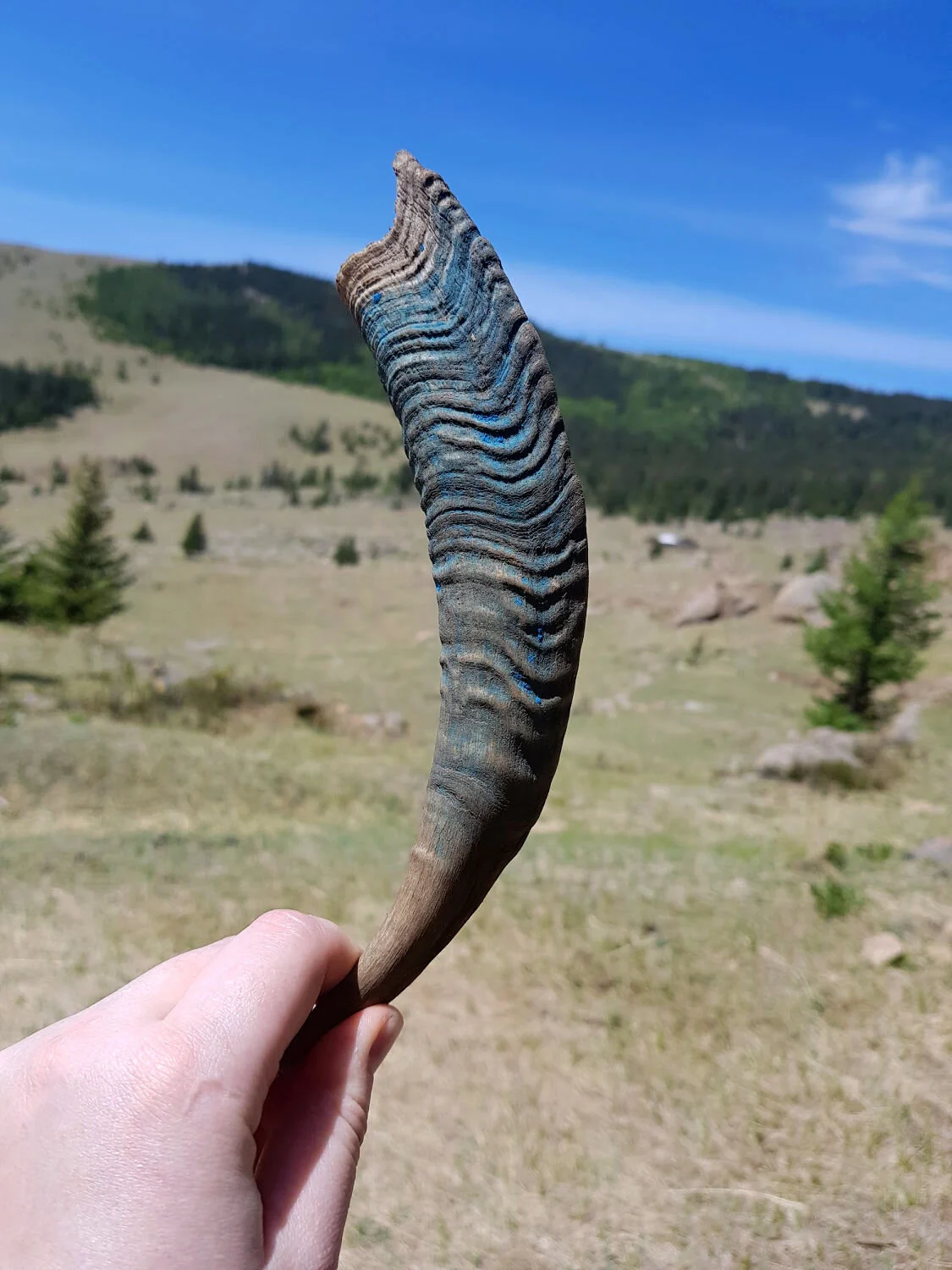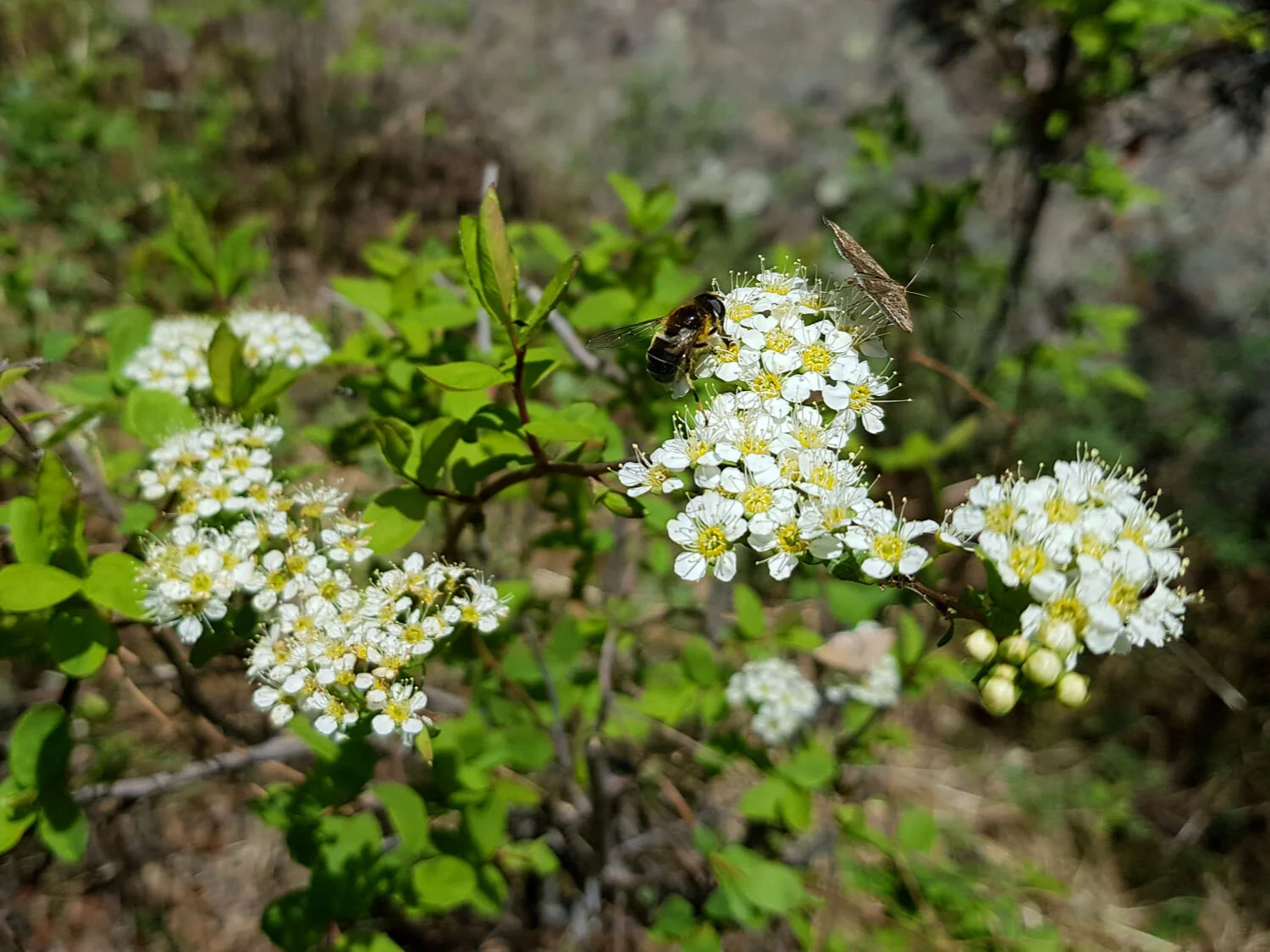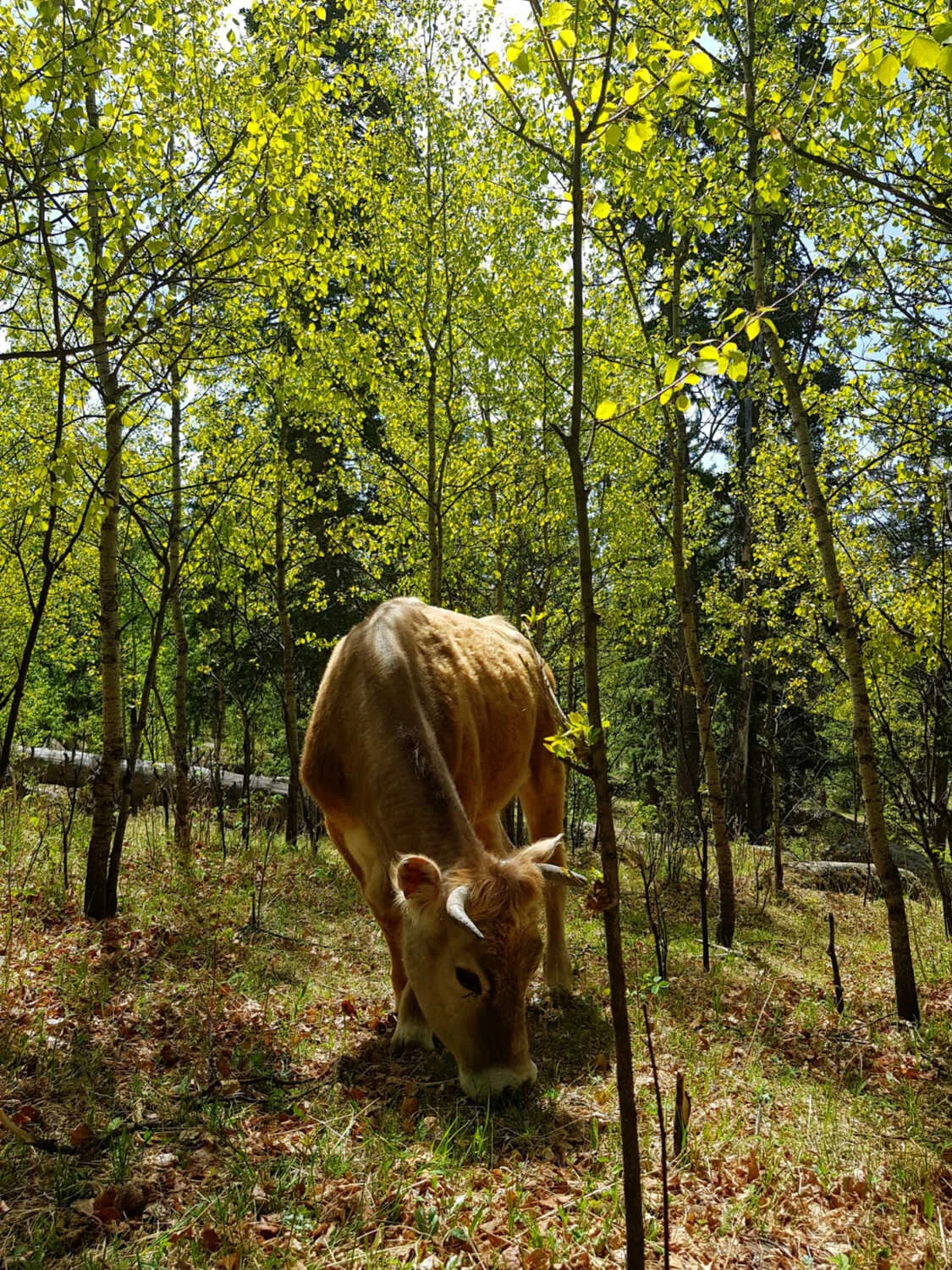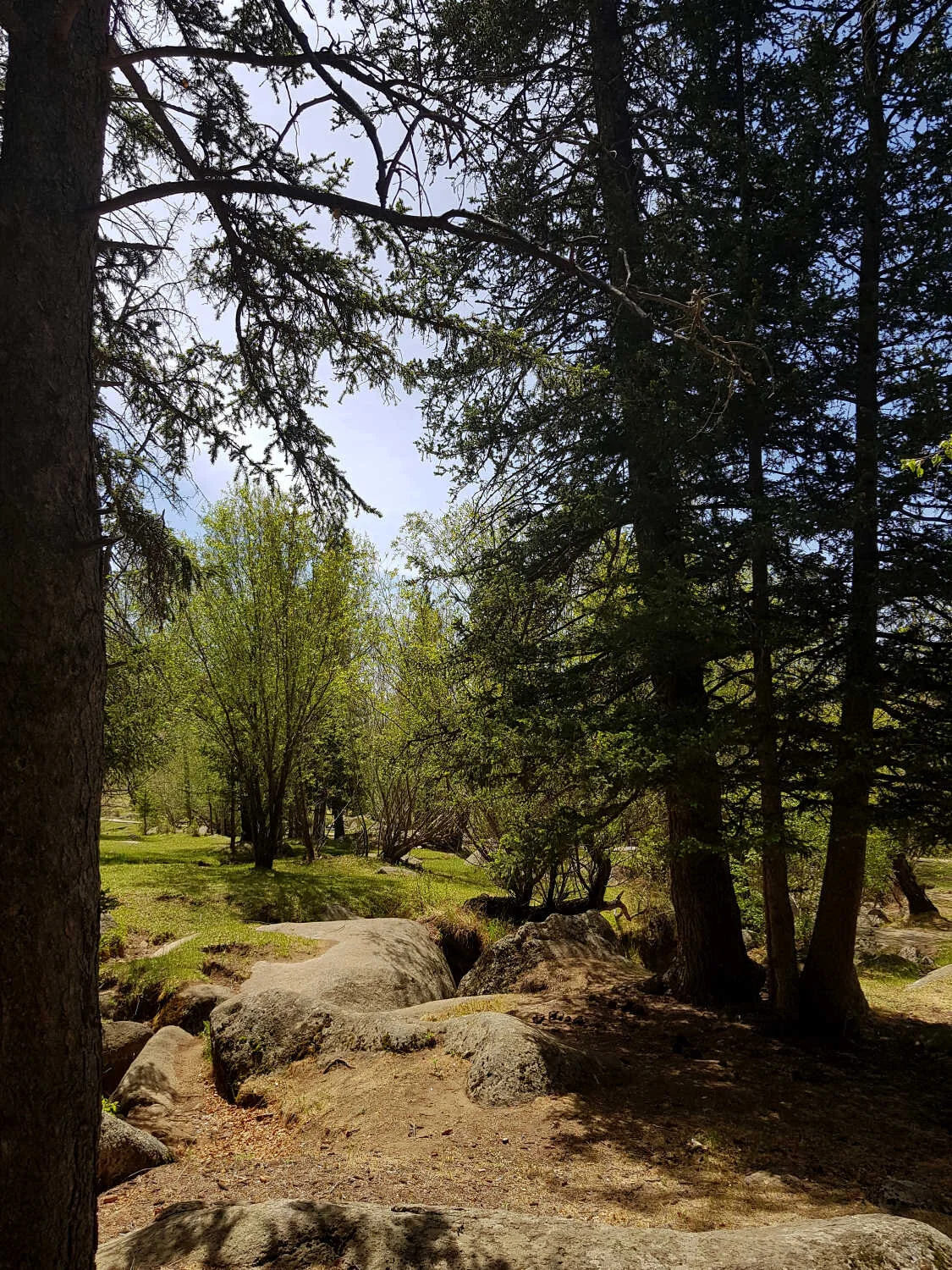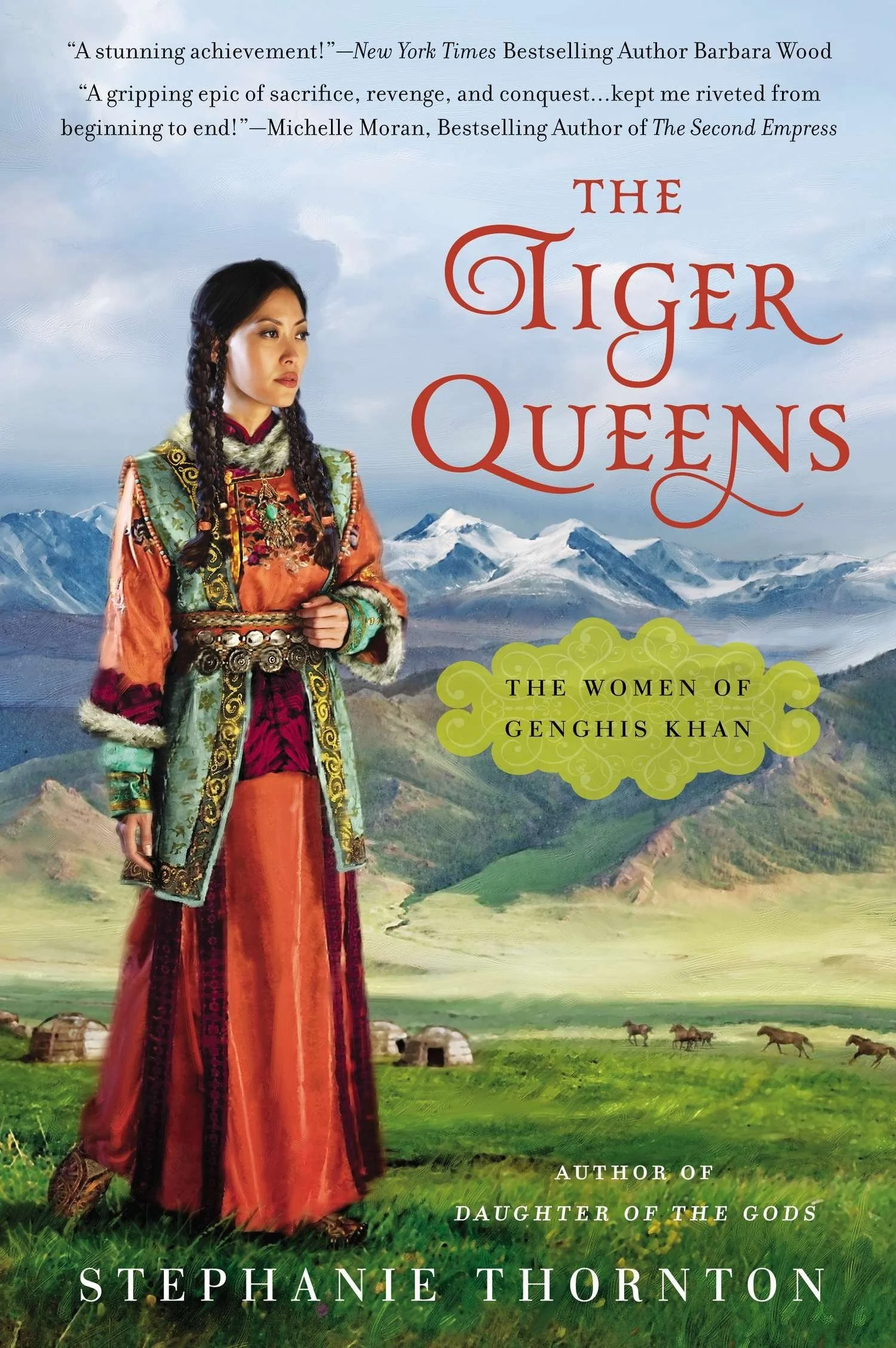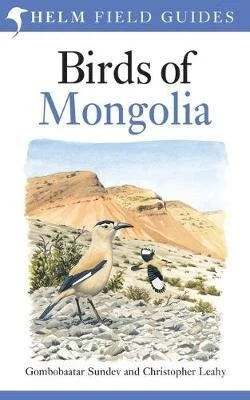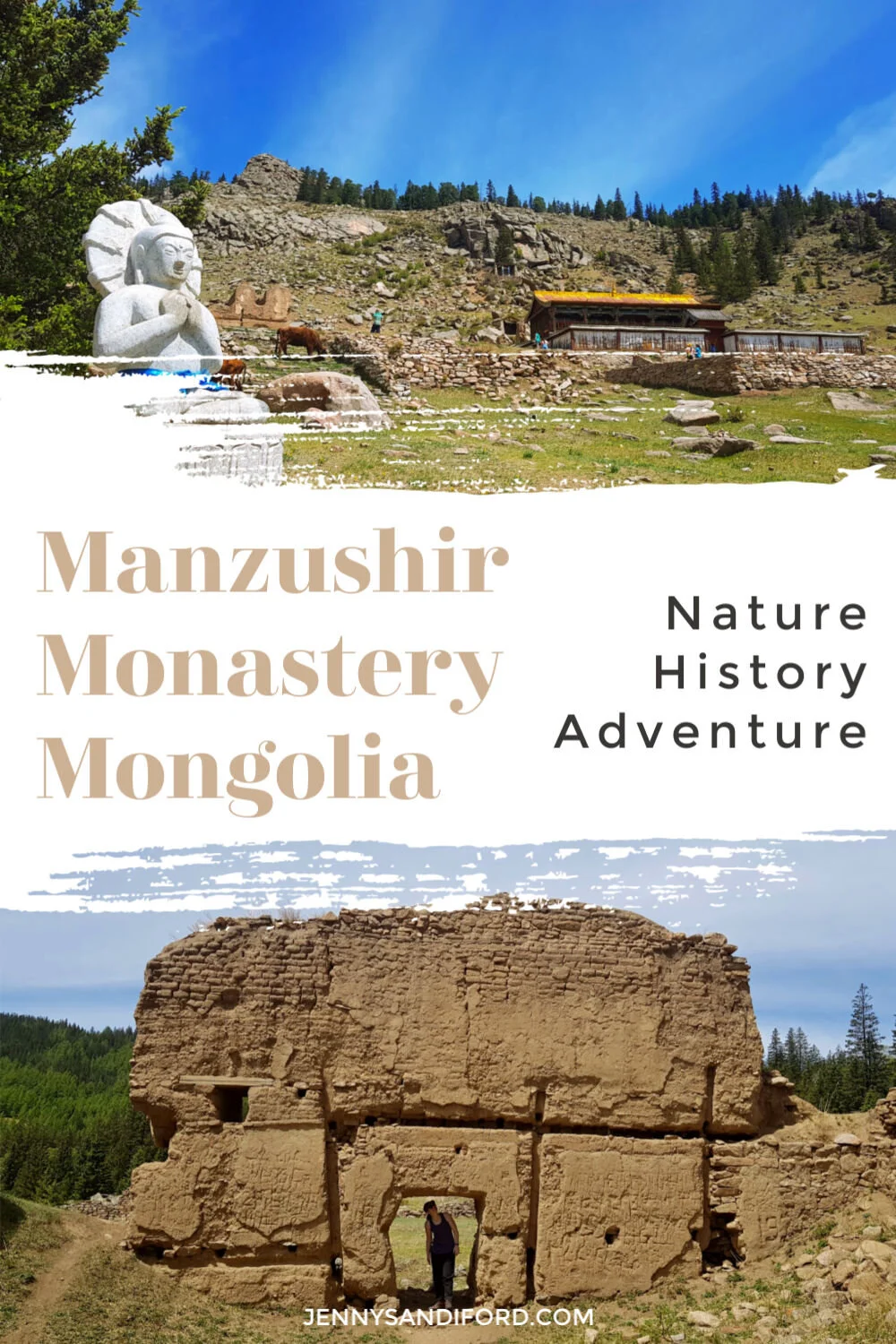Manzushir Monastery Mongolia
Where- Manzushir Monastery, South side of Bogd Khan Uul (Near Zuunmod), Mongolia
When- June 2020
*This post contains affiliate links to products I recommend. If you make a purchase through these links I will receive a small commission at no cost to you.
Ruins of Togchin Temple.
Tucked into the end of a tranquil green valley, 8 kilometers (4.9 miles) north of the town of Zuunmod, Mongolia, are the ruins of Manzushir Monastery (Манзуширын хийд). Located in one of the world's oldest nature reserves, it is on the south side of the Bogd Khan mountains, within the Bogd Khan Uul Strictly Protected Area.
Established in 1733, it was the permanent residence of the Reincarnation of the Bodhisattva of Wisdom, and grew to become one of Mongolia’s most important monastic centers.
At its peak it had around three-hundred residential monks, twenty temples and was the home of many rare and valuable Buddhist scriptures.
Sadly, most of the temples were destroyed in 1937 by Communists, during the wide sweeping purge of institutional Buddhism across Mongolia.
It is a beautiful place to see some of Mongolia’s history, to enjoy nature, have a picnic, go hiking, explore the ruins of the Togchin Temple, see 18th century Buddhist rock paintings and reliefs, and visit the restored museum.
View looking down the valley through the Togchin Temple ruins.
Manzushir Monastery’s Tragic History
Manzushir Monastery was once a place of pilgrimage and the host of many important religious ceremonies, often involving more than a thousand monks. It was first established by the sainted Lama, Luvsanjambaldanzan, in 1733, and expanded from there.
Its downfall came during the Soviet Era, a dangerous time for religion and culture in Mongolia. Prior to becoming a Democratic country in 1990, Mongolia was a satellite of the Soviet Union.
Between 1936-1938, an extension of the Stalinist Purges swept across Mongolia with a mission to stamp out Buddhism and culture. During this period, over 18,000 monks across Mongolia were killed and seven-hundred monasteries were destroyed.
In 1936, twenty-four lamas were arrested from the Manzushir Monastery.
In 1937, all twenty of the temples were destroyed.
After this, the remaining fifty-three lamas, aged between fifty to sixty, were exiled, but many of them were later shot.
All that’s left of this significant Buddhist site, are the ruins of the Togchin Temple and the retaining walls and terraces where the other temples once stood. The Lavrin temple was restored in 1994 as a museum.
Information board at the entrance to Manzuchir Monastery.
Visiting Manzushir Monastery
We drove through the wide valley over a rough dirt road, side-lined by grasslands of grazing horses and goats. Not bothering to follow the map on my phone, we ended up on a road on the left side of the valley instead of the right. We were unable to cross the swampy grassland and river toward the end.
We turned back to Zuunmod and went further through the town, then turned left onto another bumpy compacted dirt road.
Horses roamed freely around the valley, often crossing the road just when we wanted to drive past. It was a lovely time of year to visit. In June there are lots of baby horses. Many were only a few days old, running around on long, wobbly stick-legs.
We came to a dodgy wooden bridge and decided it was safer to drive through the small creek next to it, than risk its broken and half-stuck-on planks.
We found the entrance gates and continued our way up the valley.
Dodgy wooden bridge on the road out to Manzushir Monastery. Better to drive around it!
Entrance gates to Manzishir Monastery. A few kilometers before you get there.
More horse families were scattered along the edge of the road. To the left stood a wide line of trees in the small river valley. To the right, grassy steppe met our dirt track. The track was wide enough to fit our vehicle, but in some points it would have been hard to fit two cars. We didn’t encounter any other traffic driving in.
Dirt road out to the monastery.
Families of horses on the side of the road.
It was easy to find a car park as there were only a few families there. Many were picnicking in various spots not too far from the cars.
We began our walk following the meandering path from the carpark. We passed the small shop selling trinkets and snacks, and walked across the grass, sprinkled with newly opened wildflowers. There was a stone statue and a few stone artifacts on the way. We headed toward a giant cauldron.
Stone statue near entrance.
Signs near the carpark.
It was a serene setting of open spaces and blue sky with few clouds. We found the enormous bronze cauldron that the monks once used to cook up great feasts for their guests and residents. It is big enough to cook 10 sheep at a time. Behind it was a wooden teepee, I’m not sure what it was for but it looked cool.
Other articles about mongolia
Bronze cauldron that could cook ten sheep at a time.
A board walk across swampy ground with a resident cow.
Wooden teepee on the edge of the forest.
Green pagoda with a modern building in the background.
We followed a boardwalk that sat on top of the spongy ground and we crossed a small bridge next to some cows. The path wound through a field of granite boulders, it looked as if a giant had scattered them across the landscape. It smelled of cow pats and of sunlight heating the drying earth. Clumps of wildflowers sprouted up, energised by the recent rain and warm spring weather.
Purple Tiger Iris. Iris tigridia.
Chinese stellera. Stellera chamaejasme
Cymbaria. Cymbaria dahurica
Small purple flowers. Anyone know what type?
Prickly wild rose. Rosa acicularis
We passed another cow munching on grass as we walked up the uneven, ancient steps toward the temple. We had the ruins all to ourselves, except for the few cows that roamed through the temples, ignoring us.
The crumbling walls and archways looked like they might collapse at any moment, held together by ancient mud-brick and clay. A peacefulness settled in the air. Only disrupted by the background of bird song and ground squirrels chirping at each other. It was easy to imagine it once filled with monks, chanting their prayers across the valley.
Me in an ancient archway wondering if it will collapse.
A peek through to the forest beyond.
Grass grows out of the gaps in the old mudbrick ruins.
Ruins of the old Togchin Temple
We walked behind the Lavrin temple that had been restored in 1994 and is now a museum. It was closed when we were there. But from a past visit I can tell you it maintains its authenticity and feels as if it’s hundreds of years old. It has uneven floors, creaking wooden boards and leaning posts that look like they might sway over and collapse the building
The Lavrin Temple, restored in 1994 as a museum.
Lavrin Temple, now a museum.
The inside of the museum was closed when we were there due to Covid-19, same as all the other museums and public spaces that had been closed since February. But I had these photos from the inside of the museum from a previous visit. Though it is a small space, you can appreciate the details and the colourful designs of the hand-painted ceilings, beams and doors.
There are some interesting artifacts housed in the museum. I was particularly interested in the bowl made from a human skull and the flute called a Kangling in Tibetan. I’m not sure of the Mongolia name, but from Tibetan it translates as ‘leg-flute’ and is made from a human femur bone. I’ve seen these in several places and always wondered what they were for.
View down the valley from the second floor of the museum.
Inside the Manzushir Museum.
Exterior of the museum with hand-painted detail.
Artifacts inside the museum. A bone cup made from a skull, the Kangling bone flute, a bell and mirrors.
We wandered past the cliffs above the monastery. There were little houses that nestled naturally into the rocks that were there to protect the rock paintings.
If you wander around, you will find other rocks with interesting things on them. There is one big rock, carved in relief with Tibetan script. Others have paintings of the Buddha and some with Mongolian script.
Shelters on the cliffs protecting the rock paintings.
We were drawn to the edge of the forest by the loud alarm call of a marmot. He blasted his shrill chirps all the way across the valley. Since it is a protected area, it is abundant with marmots that can’t be hunted for their meat, which is considered a local delicacy. (Marmots also carry bubonic plague and not only is it illegal to eat them, it is a huge health risk to eat them.)
We followed the fat marmot into the forest and saw his network of huge burrows dotted across the hillside. A cuckoo was calling overhead loudly, and repetitively. Small birds skittered across branches of trees.
We watched the marmot run off, he looked like an ungainly, flapping cat, not at all graceful. We started downhill again. The larger larch trees turned to Siberian birch. Here we found a family of friendly cows happily moving their way through the soft grass in the bright undergrowth. We also found several skulls, a goat’s horn and some pretty flowers.
Animal skull in the forest.
Blue goat’s horn.
Russian spiraea. Spiraea Media Schmidt.
Pretty forest cow.
Goat skull in the forest.
Leaving the forest.
After a lovely morning of exploring, we made our way back to the car. It was around lunchtime and the car park had filled up with lots of families arriving for their day out.
We had our own picnic lunch, then drove back to Ulaanbaatar to beat the traffic getting back into town.
Summary
This is a great day trip from Ulaanbaatar. You can just go for a leisurely picnic, spend the day exploring, or if you are more energetic, go for a hike into the mountains.
Tips and advice
How to get there
Drive- If you have a car, or are renting a car it’s an easy day trip from Ulaanbaatar. The drive is 48km and takes up to 1 hour 30 min to get there. Drive toward the airport and turn left at the big roundabout heading toward Zuunmod.
Download Maps Me, an offline map that works anywhere in Mongolia.
Drive through Zuunmod and turn left toward the valley that leads to the monastery. Stay on the right-hand side of the valley.
Get a taxi- Get a taxi to take you out for the day. I recommend using Help Taxi. Talk to them the day before and get a price for a driver to take you out for the day.
Help Taxi phone- +976 09965 2371
Book a tour- There are many tour companies that do day tours from Ulaanbaatar.
2. Admission
When we went there in June 2020, there was no admission as the museum was closed. But it typically costs 3000 Tugrik (USD$1.06) for National Park entrance and 2000 Tugrik (USD $0.71) for the Museum.
3. Amenities
Shops- There is a small shop that sells drinks, snacks and souvenirs.
Toilet-There is an outdoor toilet available near the carpark. It might be a better idea to make sure you go to the toilet before you get there.
It is good practice to always have toilet paper or tissues with you when travelling in Mongolia, as it is not provided in most places. Also have hand sanitizer and wet wipes handy when going on trips.
4. Hiking
Hike to the Ovoo at the top of the hill to the west.
This is an easy hike if you don’t mind hills. Go up through the forest to the west of the monastery at the end of the valley. Go straight uphill till you get to the Ovoo at the top (the big ceremonial pile of rocks).
Manzushir Monastery to Ulaanbaatar- I have done the hike from the Monastery to Ulaanbaatar before, it was around 15kms and took us nearly 10hours. We did this in March so it was still very icy. The path was not clearly marked and we had to navigate a small glacier, go through a swamp and cross a few ice fields. Only do this if you are with someone who has been on the trail before. I imagine in summer the path would be overgrown and hard to find. It was an amazing hike though.
5. Ulaanbaatar Accommodation recommendations
Shangri-La Hotel Ulaanbaatar
Novotel Ulaanbaatar
6. Reading recommendations
Checkout the latest edition of Lonely Planet Mongolia for recent info on pricing and opening times.
pin it on pinterest
Please leave me a comment below. I’d love to hear from you!

